
Three extensive trips to Seoul inevitably made me write this post. I just can’t keep all these quirky details about the city to myself — I want to share them with as many people as possible, together with more generic things to know before going to Seoul.
It’s a city full of contrasts: Centuries-old palaces sit in close proximity to modern buildings; mountains provide the promise of nature, while city streets have free Wi-Fi all throughout their length. I hope that with my complete Seoul travel guide you’ll be fully geared with useful and fun knowledge, ready to take on the adventure!
Article contents
- What should you know before traveling to South Korea?
- What are the do’s and don’ts in Seoul?
- How many days are enough for Seoul?
● Now you see me, now you don’t
● Exciting world of Korean food
What should you know before traveling to Seoul?
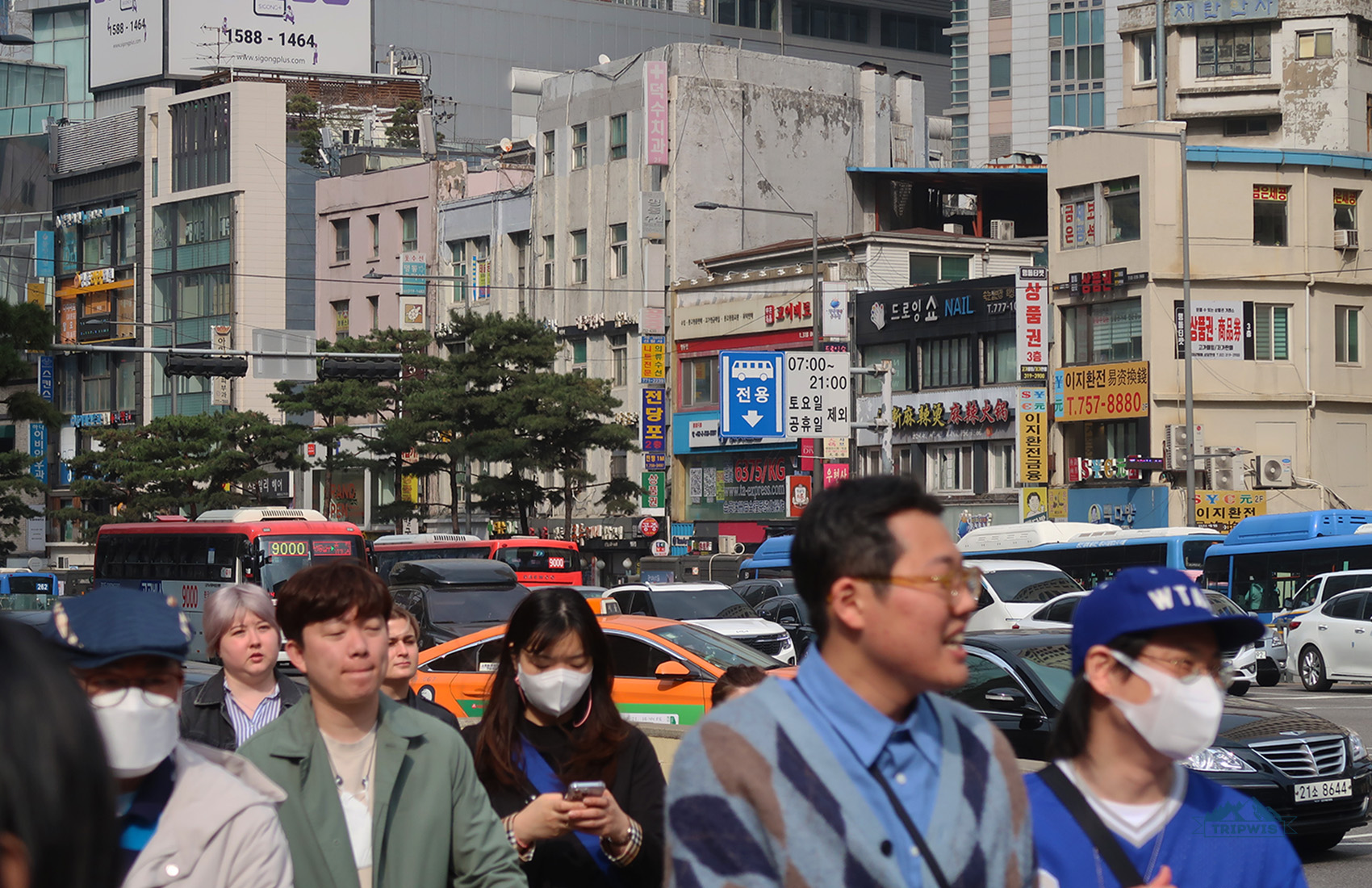
I get the uneasiness one can feel when being met with an entirely different culture. South Korea, for most travelers, is something they have never experienced in their lifetime.
After my recent trip to Seoul, I felt that the generic list of recommendations on Seoul should definitely be expanded further than the usual “learn a few Korean phrases”. It’s solid advice, don’t get me wrong, but the city and its residents are more enigmatic and mysterious.
For example, did you know that the Koreans are crazy about socks and tights? Or that Seoul’s downtown is awfully quiet, even during peak hours? Among other observations, I was pleasantly surprised by the widespread availability of public Wi-Fi in the streets of Seoul.
So, if it’s your first trip to Seoul, keep reading to learn everything you might need to have a successful vacation!
P.S. In this post, I cover almost everything except the best areas to stay in Seoul. It’s such a big topic so I gave it its own article. Check it out!
Okay, I’m here. What now?
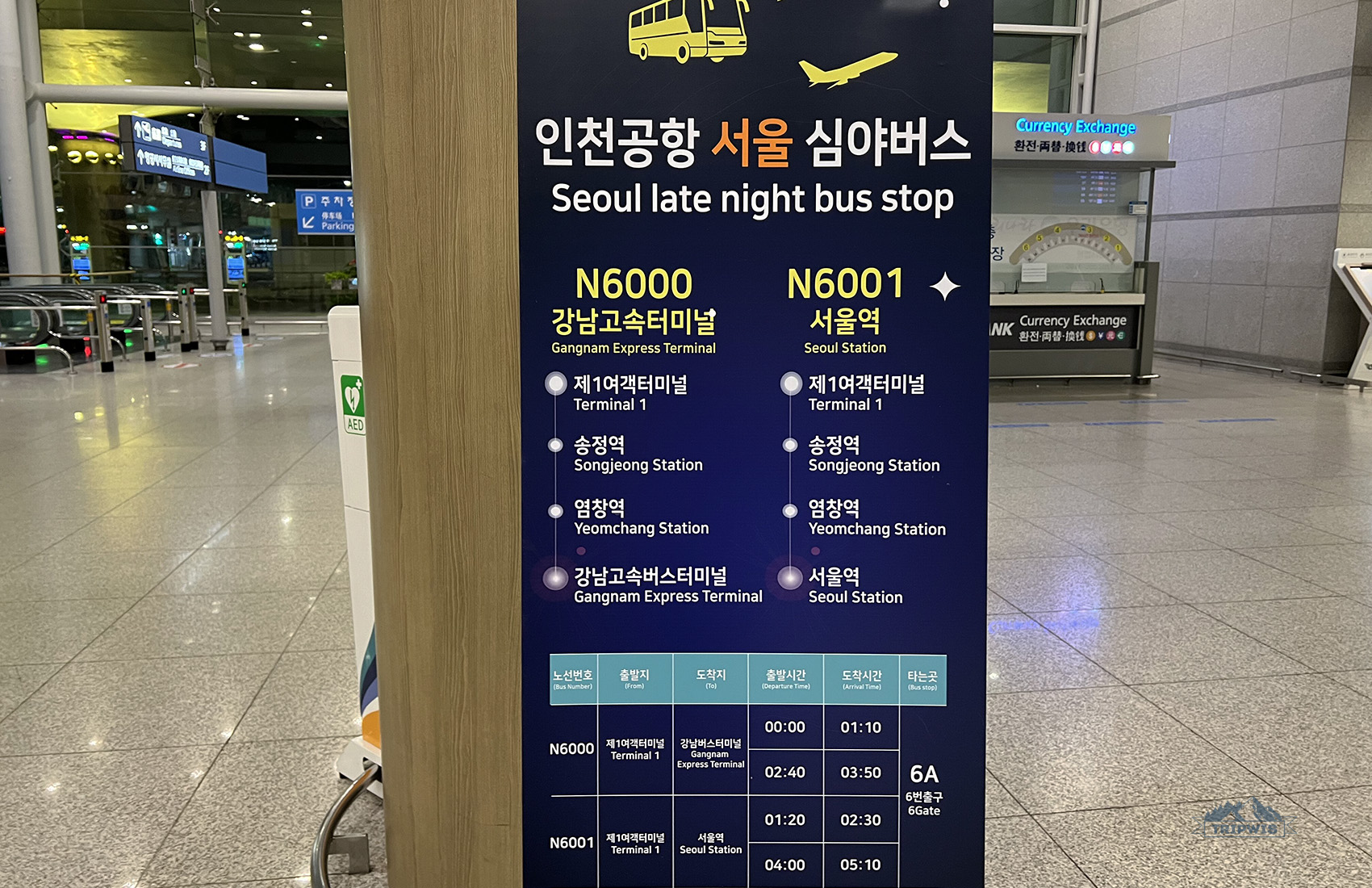
The feared drive from the airport to the city center is the topic of many online forums concerned with travel tips for first-time Seoul visitors. And for good measure: The majority of international flights land at Incheon Airport, which is located a good 50 km from Seoul’s downtown.
There are a few ways to get to the city from the airport:
- The cheaper ones are Airport Railroad Express — 13,000 krw / $9,5
- and KAL-Limousine Bus — 18,000 krw / $13
- while the more expensive ones are taxis — 60,000 krw / $43
- and a shared transfer — 29,000 krw / $20
If your plane lands at a reasonable hour, you’ll be alright no matter which means of transportation you choose.
However, if you’re set to land at night, you’re pretty much screwed: There are night buses, but their schedules have seemingly been created by an evil mastermind, as they’re so inconvenient. On top that, you have to pay cash to get on a bus, and all of the currency exchange stands are usually closed at night (as well as SIM card stands, but that’s a whole other problem). The local taxi service Kakao, which is famous for having competitive pricing rates, doesn’t work if you don’t have a Korean phone number. Which you don’t, since it’s nighttime and you cannot purchase the SIM card.
Being sleep deprived and having to deal with these hurdles is not a fun experience, so there’s the only option left for you: Uber. It will cost you a minimum of $40 to get to the city center, but don’t worry: The Tax Free Korean system will have your back once you decide to head home. Sadly, it won’t cover the outlandish airport transfer, but you’ll get some money from other purchases you’re bound to make during your trip to Seoul.
Getting around Seoul
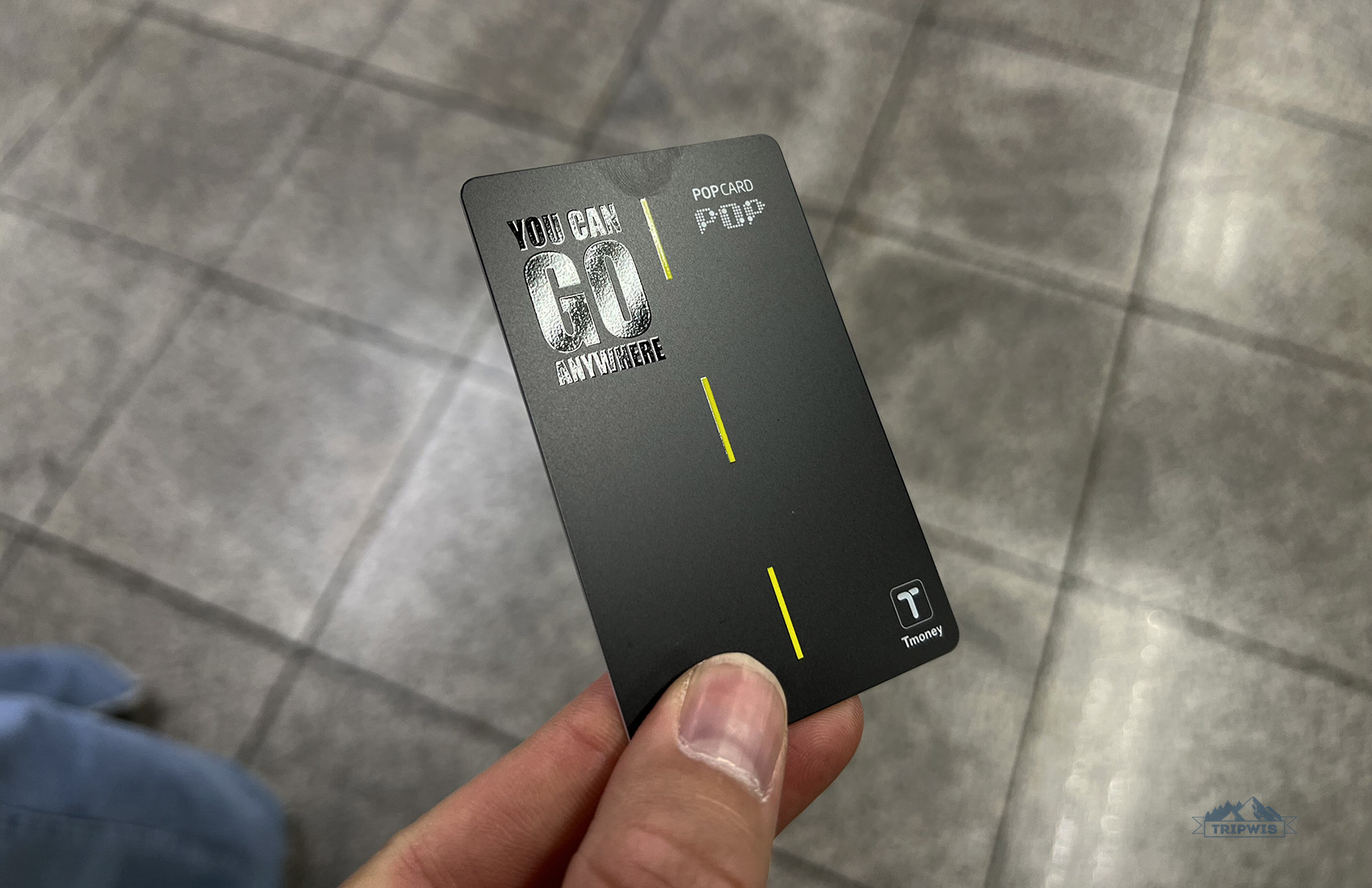
If you’re reading this text, it probably means that you have already figured out how to travel to South Korea (duh). Now what is left is finding your way around Seoul’s expansive public transportation system and trying to do it right.
In all fairness, Seoul’s public transportation net is one of the best in the world: It’s extremely well-developed and super easy to navigate. After spending a fortune on a taxi ride from the airport, we stuck to using buses and metro for the remainder of our trip.
- I advise you against purchasing single journey tickets each time you want to take a bus somewhere in Seoul, but buy a rechargeable transportation — T-money card.
It can be purchased at any small convenience store (Seoul is practically swarming with GS25 shops) for 5,000 krw / $3,50 or in advance through the Klook service and picked up at the airport. You can easily recharge the card at any metro station, using special wending-machine style apparatus. The least amount of money charged for one single subway ride is 1,400 krw, which is a steal considering the distances covered!
The same T-money card can be used to pay for bus rides (the ones where you aren’t required to pay cash): Just don’t forget to tap the card onto the sensor two times — when you get on the bus and before getting off it. The taxi drivers even have their own terminals where you can also pay with T-money card.
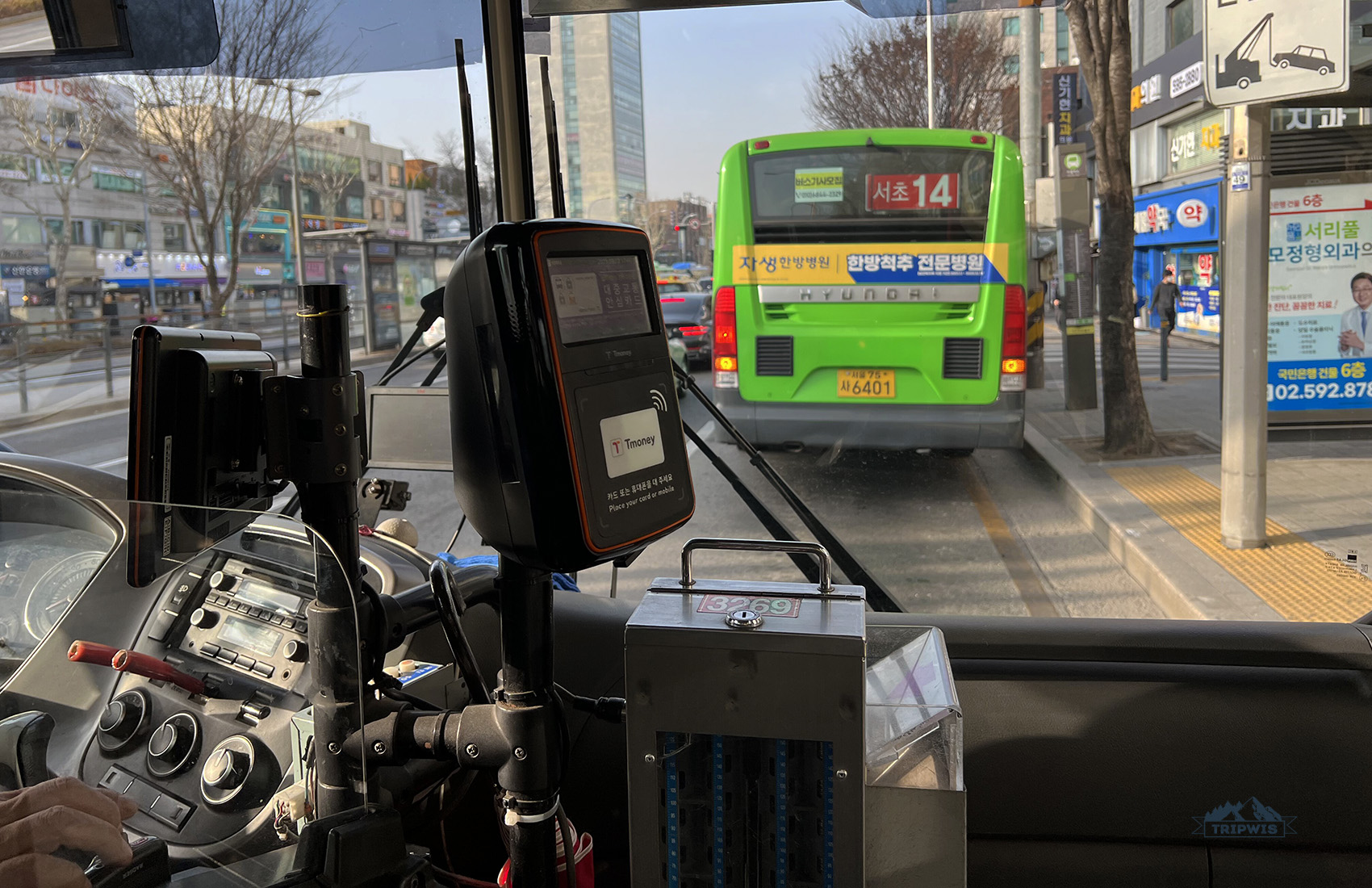
Seoul’s bus system is pretty eye-catching, given the fact that each bus type is a different primary color. You’ll get the hang of it, but if you want to save some cash never take the red buses! Like in nature, red-colored things represent danger, and in Seoul these vehicles represent warning to your wallet. Red buses are technically intercity ones (thus they are way more expensive), but their routes fall inside Seoul’s city limits. Even if your map tells you to take this bus, think twice before getting on board.
I was pleasantly surprised with how nice and clean the public transport was. Did you know that there are restrooms inside Seoul’s metro? With the fact that the restrooms are free, I was terrified to look inside, but the contents turned out to be spotless and pristine. Shocker!
Can I get my money back?
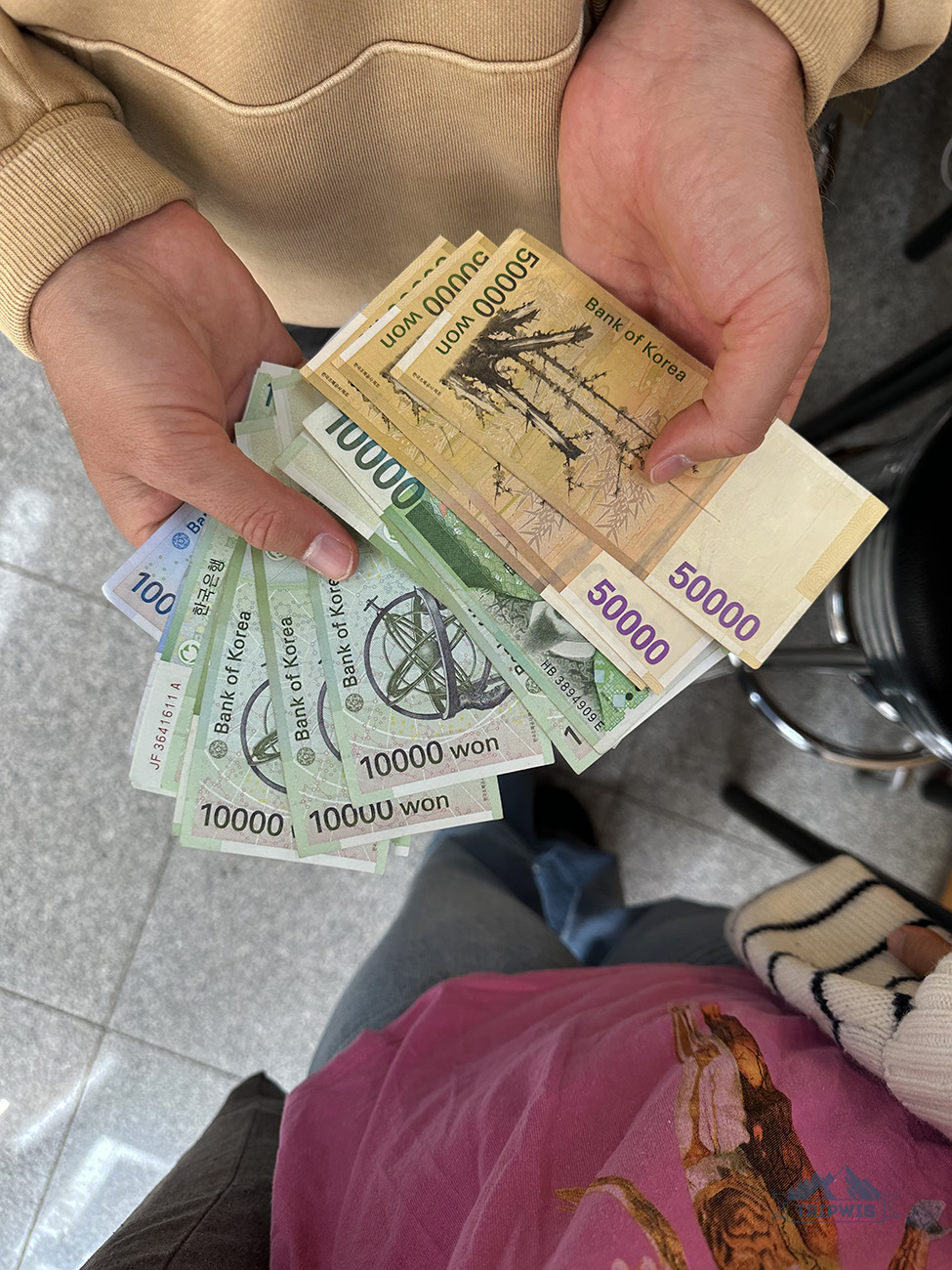 |
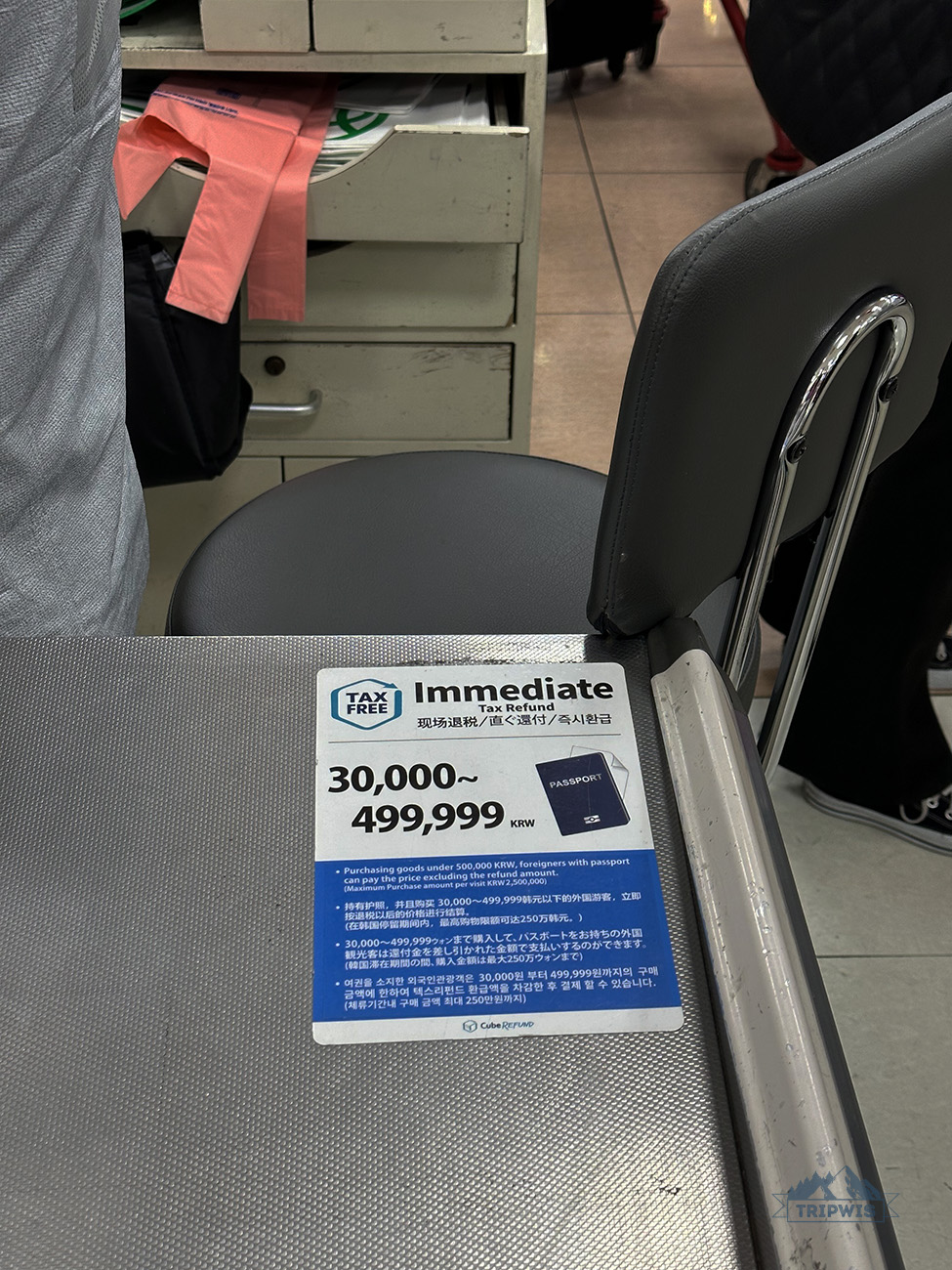 |
One of the most useful things to know before visiting South Korea and particularly Seoul, in my opinion, is its favorable to tourists Tax Free System. It’s simple, efficient, and covers all the bases. What more could you possibly ask for? There are a couple of different ways to get your hard-earned money back after an uncontrollable shopping spree you’re bound to have upon entering any Korean store.
So, what are the ways where the Korean Tax Free System can work in your favor?
- There’s such a thing as an immediate tax refund that you get at the counter, and it applies mainly to cosmetics (make use of this at the Olive Young stores — the mecca of all things beauty and skin care) and purchases made at general supermarket chains (get your seaweed snacks at Lotte Mart at a reduced price!). Generally, it works like this: You come to the check-out stand, the cashier sees that you’re a foreigner (they are right 99% of the time, but you can also bring up the topic yourself), asks for your passport, and BAM! On the condition that you purchases fall somewhere between the 30,000 krw and 499,000 krw mark, the discount of 6% is applied right then and there, and you pay the newly reduced price.
The first time we went through these motions, we were absolutely shooketh! Never have we seen such a cool and easy system before. Thank god for luggage weight restrictions!
- Other goods falling upon the tax refund policy include clothing and electronics. Here, the process requires a little more of your active involvement. The money from the purchases will be returned to you at the airport: The only things that are required from you are your identification and the receipt. The process is, again, easy peasy.
Side note: Be mindful when purchasing the electronics in Seoul. Make sure to ask whether the store is Tax Free or not, as the Sony brand store I was planning to purchase my new camera from didn’t provide the opportunity to get a tax refund, while the general electronics store that carried that same camera did. The choice was pretty obvious; how can you possibly pass up a bargain?
I wish every country employed the same Tax Free practices! For now, do the bulk of your shopping during your travels to South Korea, and don’t forget to leave plenty of room in your suitcases.
Seoul’s shopping therapy recommendations
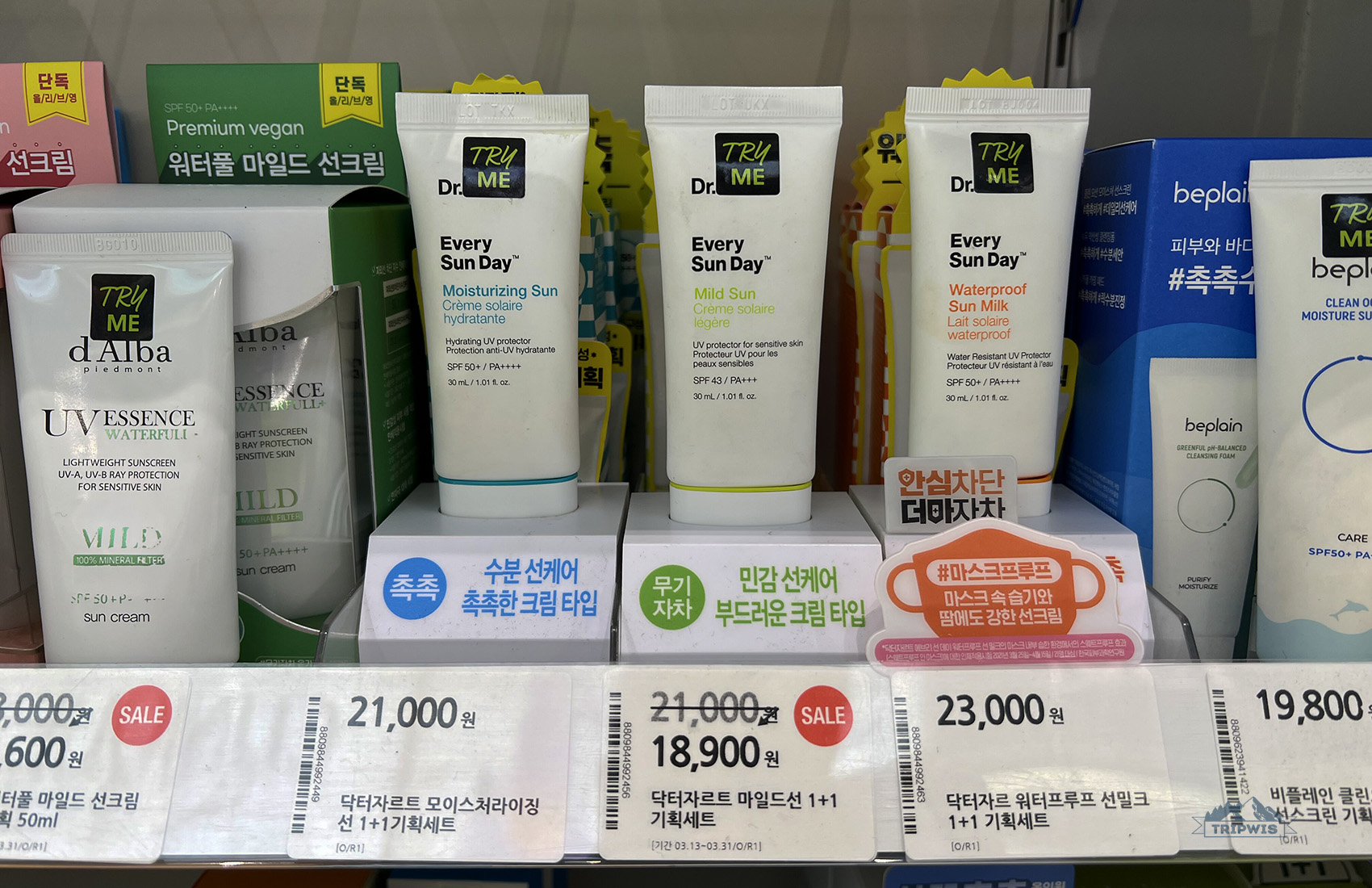
No respectable shopaholic will ever google the phrase “what to do in Seoul”, because they know that every spare second of their jam-packed itinerary will get filled by shopping. No matter the neighborhood, the streets of Seoul are bustling with shops of all kinds. So, what are the shopping-adjacent things to know before traveling to Seoul, and South Korea in general?
My point is — make sure you purchase the following items during your trips to Seoul:
✨ Korean cosmetics are all the rage, and for good reason: The products are considered super effective, all the while being heaps cheaper in Seoul. I urge you to not fool around and head straight to the Olive Young flagship store in Myeongdong area. This particular store can get quite crowded, but only because they have the best assortment of products, compared to other Seoul’s beauty shops.
I did a substantial amount of damage to my wallet in the store, but can you blame me? Just look at the prices (all of you oblivious to the intricate world of cosmetics, avert your eyes, this part doesn’t really concern you):
- A set of three (!) Ma:nyo essences goes for 35,000 krw ($25),
- COSRX cleansers that amassed quite the cult following among beauty gurus sell for 10,000 krw ($7),
- and the coveted Dr.Jart+ face masks go for 7,000 krw ($5).
Sheet masks are what most people stock up on while in Seoul, that’s the fact; and the prices for them start at 1,000 krw ($0,70) in big stores. However, you can find them for even cheaper in tiny shops that are usually conveniently located in front of post offices, so that you can send literal packs of face masks home and not worry about filling up your suitcase to the brim (I found one of these stores on the Eulji-ro 42 street, just fyi).
We all know how crazy one goes for ✨ Korean fashion (or K-Fashion, as it’s sometimes referred to as). Particularly streetwear, K-Pop style and high-end brands. Seoul’s street style cannot be put into just one box: It’s futuristic, with hints of preppy, and overall a wild ride for those of us absolutely clueless about fashion. Clothes from Korean clothing brands like 8seconds, HYEIN SEO, and Lucky Chouette are on the to-buy list of any fashionista traveling to Seoul. Note that you don’t have to spend thousands of dollars in high-end boutiques (unless you want to). There are plenty of budget-friendly stores at the Dongdaemun Market. You can get a K-Pop makeover of your dreams and not go bankrupt in the process!
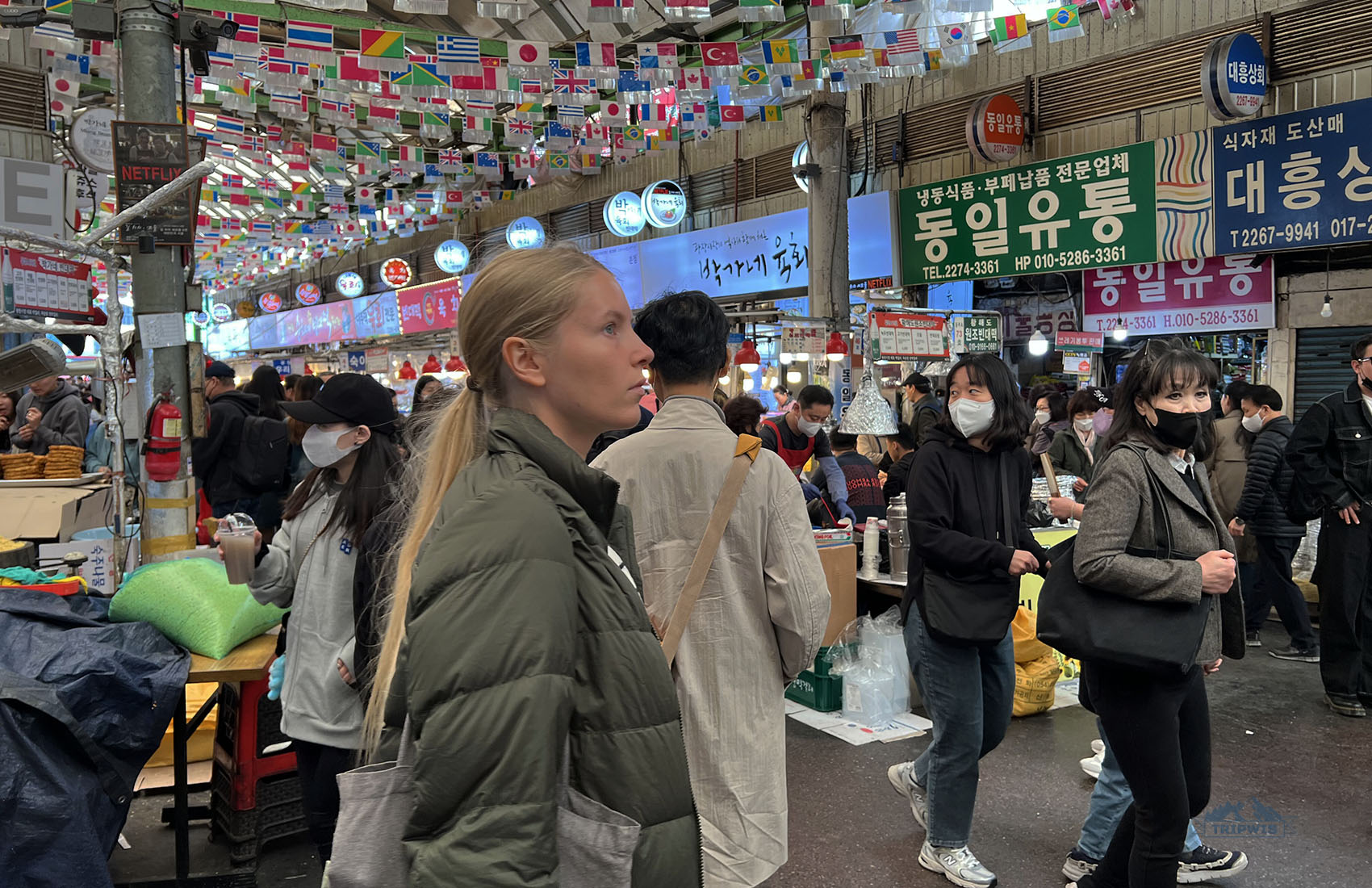
✨ Electronics was the shopping realm I decided to splurge on during our last trip to Seoul. Don’t forget that the branded stores, like Sony, Nikon, and Canon are usually not Tax Free. So, steer clear of those, and spend your money at shops that are not married to one particular brand of gadgets: Like Electro Mart at Seongdong. I personally chose the store to finally upgrade my old and trusted G7X for a new and shiny Sony ZV-E10: I paid $700 for the basic set up, with the Tax Free refund being around 8%, which is a substantial amount of money!
If spending hundreds of dollars on new photo equipment makes your heart flutter (and not in a good way), but you still want to up your creative game, head over to the areas that specialize in second hand gadgets. I suggest you start at the area of Namdaemun-ro, which has an entire street dedicated to refurbished photography equipment (starting with the Canon store); and then move your way up towards Yongsan Electronics Market (pretty self-explanatory, but get ready for more crowds here).
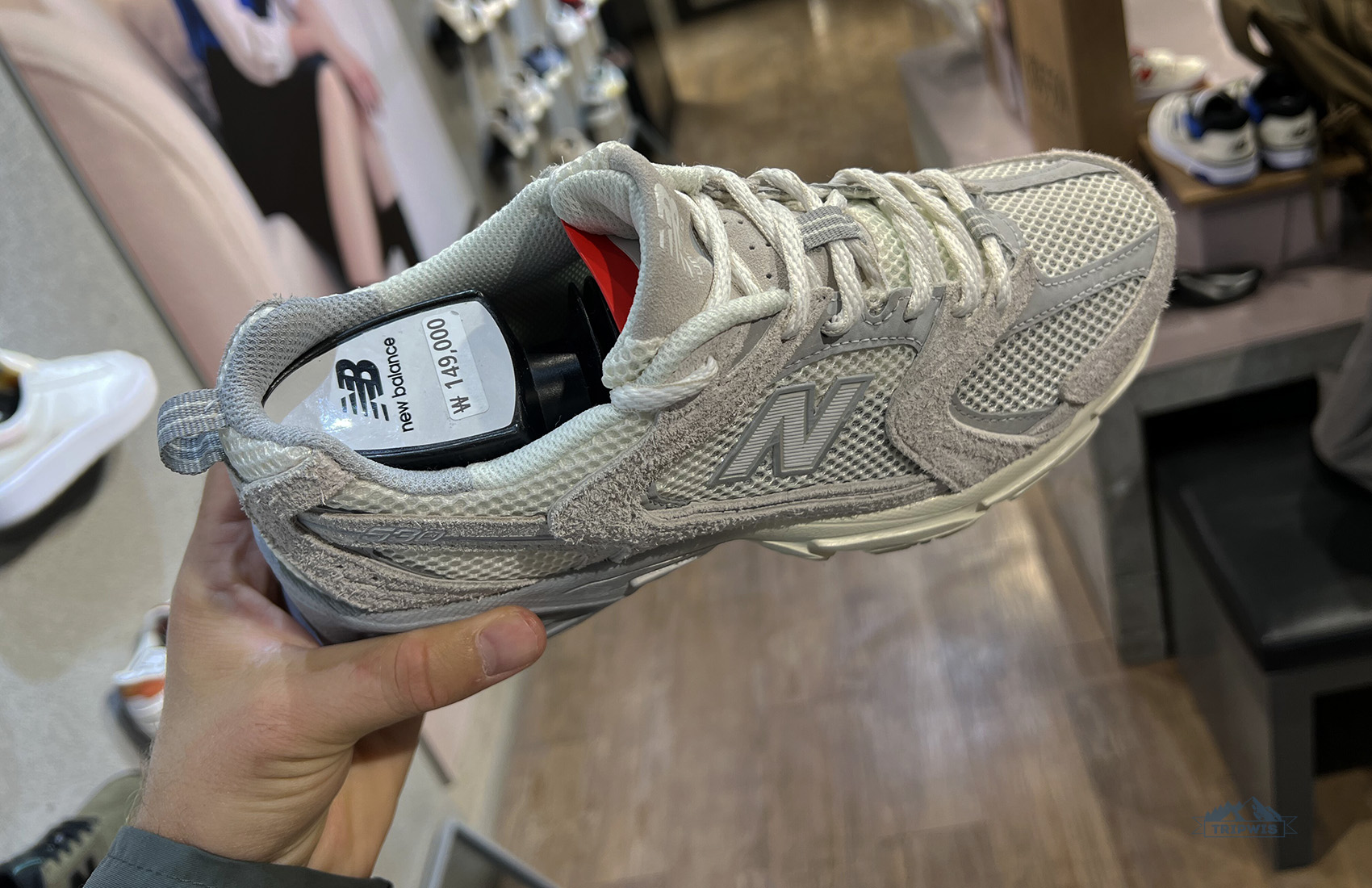
✨ Where are our sneaker heads at? If you cherish your latest kicks more than your university diploma, Seoul is the place to be! It wouldn’t be an overstatement to say that many people travel here to level up their sneaker game at a decent price. For that very reason, pop into any sneaker store you see, like strictly branded shops or stores that sell the whole medley of shoes like JD. Maybe your next pair is waiting for you on the shelf in one of the many stores.
Believe me when I say that sneakers in Seoul are consistently cheaper than in other places, no matter what brand you feel connected to, be it Asics, New Balance, Hooka, Fila, IYSO, — you’re guaranteed to save your buck on the purchase. To be more specific, I saw the highly sought-after New Balance 530 sneakers for only $90 (plus Tax Free!) In the words of a famous TikToker, “Girls (and boys) that get it, get it; and those that don’t, don’t!”.
This list should make for a good starting point when deciding on the spending budget for your next trip to Seoul!
Side note: Koreans do love to wait in line. The long queueing prospects don’t deter them from missing out on that one thing everybody else seems to be desiring as well. Such a concept is wild for some people, but any hyped-up place in Seoul requires you to wait in line for 40 minutes, at best.
A touch of royal history
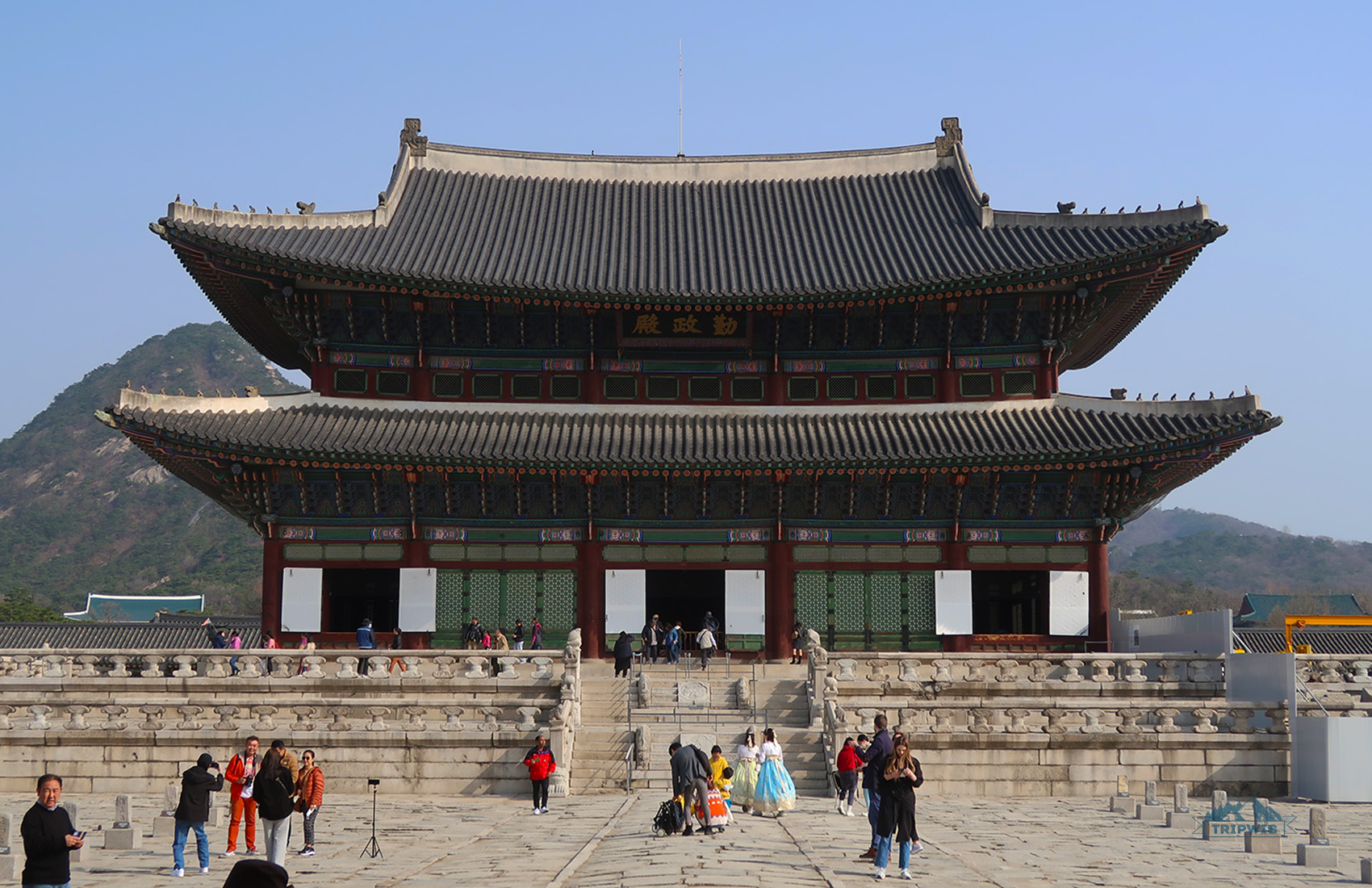
If you’re traveling to Seoul for the first time, I feel like visiting one of the many historical sights should be one of your top priorities. After all, what better way to get to know the city if not through the places that hold the bulk of the nation’s memories?
Seoul is a proud owner of five royal palaces. They don’t cost much to enter — the more popular ones have a 3,000 krw entrance fee, while the less visited cost only 1,000 krw to enter:
- Gyeongbokgung Palace — the largest palace of the five; usually the first to be explored by tourists. Hence, the higher chances of crowds. Try to time your visit so that you can witness the fascinating process of the changing of the guards.
Side note: The most popular thing to do while at the palace? No, not trying to push your way through to get some decent pictures. It’s hanbok rental — wearing traditional Korean clothing. Don’t worry about being left out of the fun, as both women and men can participate in renting the clothes. The pictures you get as you wonder the grounds in colorful satin attire are worth the added expense!
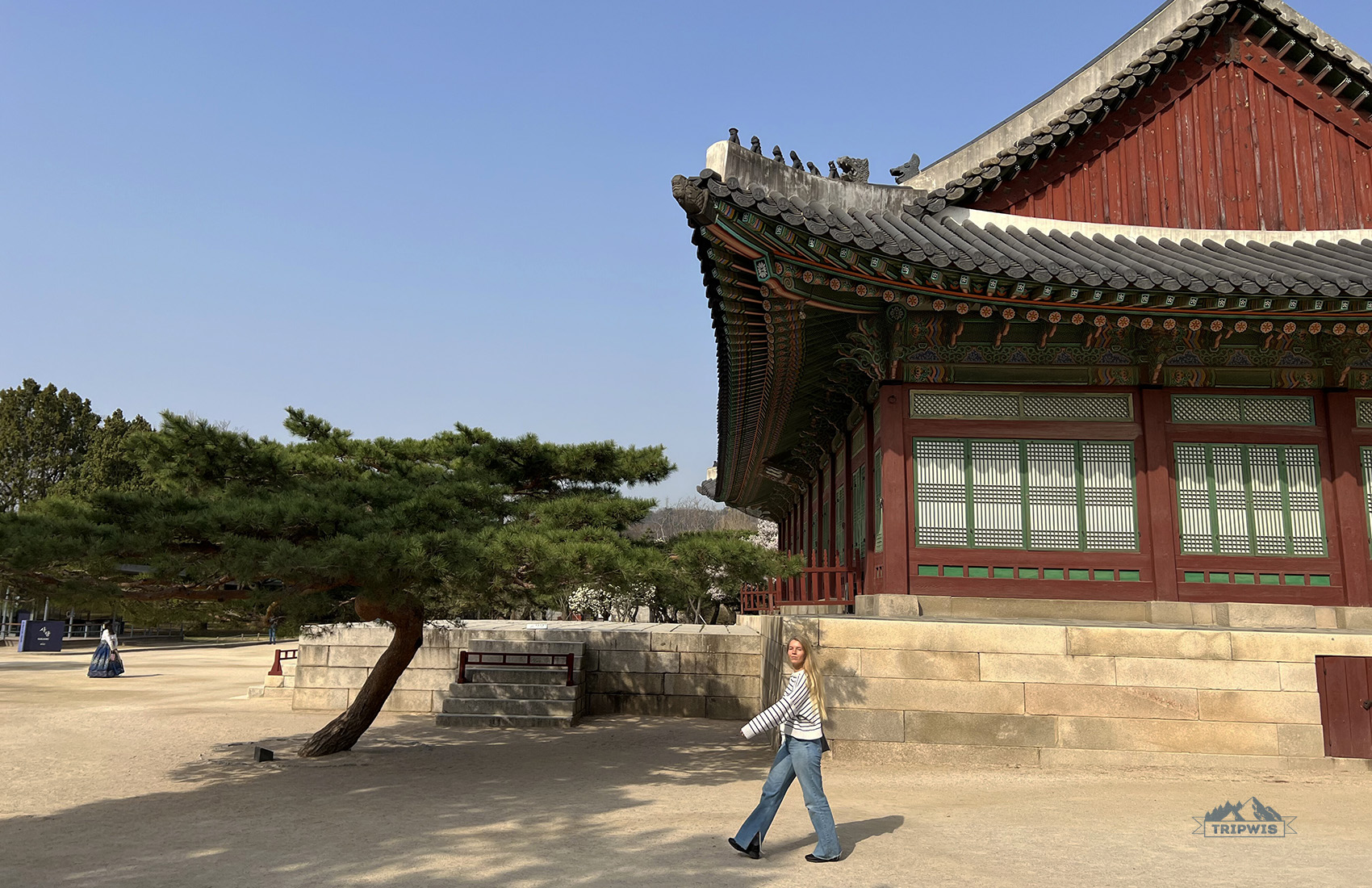
- Changdeokgung Palace — the second most popular palace of Seoul, it attracts a tad less visitors every day. The Palace’s grounds are massive and there even is a unique Secret Garden that you can explore all by yourself!
- Changgyeonggung Palace — a place that seemingly exudes serenity and calmness from the very ground you walk on: There’s a shop that sells Korean tea on the premises, so stock up on souvenirs for your loved ones back home!
- Deoksugung Palace — nestled inside the ring of modern buildings, this palace definitely sticks out like a sore thumb, but in a positive way. Here, you get a deeper appreciation for Seoul’s rich history, especially with such a futuristic backdrop.
- Gyeonghuigung Palace — one of Seoul’s hidden gems, this palace doesn’t get nearly enough traction for its historical importance. Covering a little less territory than its brothers, the palace has only a few of the original buildings remaining. If you want to be the only one pacing the tracks throughout the palace’s grounds, you’re more likely to achieve this dream here.
Personally, we managed to pay a visit to four out of the five palaces. Upon finishing this historical quest, I came to the conclusion that if you don’t have much time in the city, you can very well stick to visiting only one palace. Two, tops! Don’t get me wrong, they’re all very enchanting and beautiful, but from the tourists’ standpoint, they look very much the same. Gyeongbokgung Palace and Changdeokgung Palace should do the trick!
I need my online time
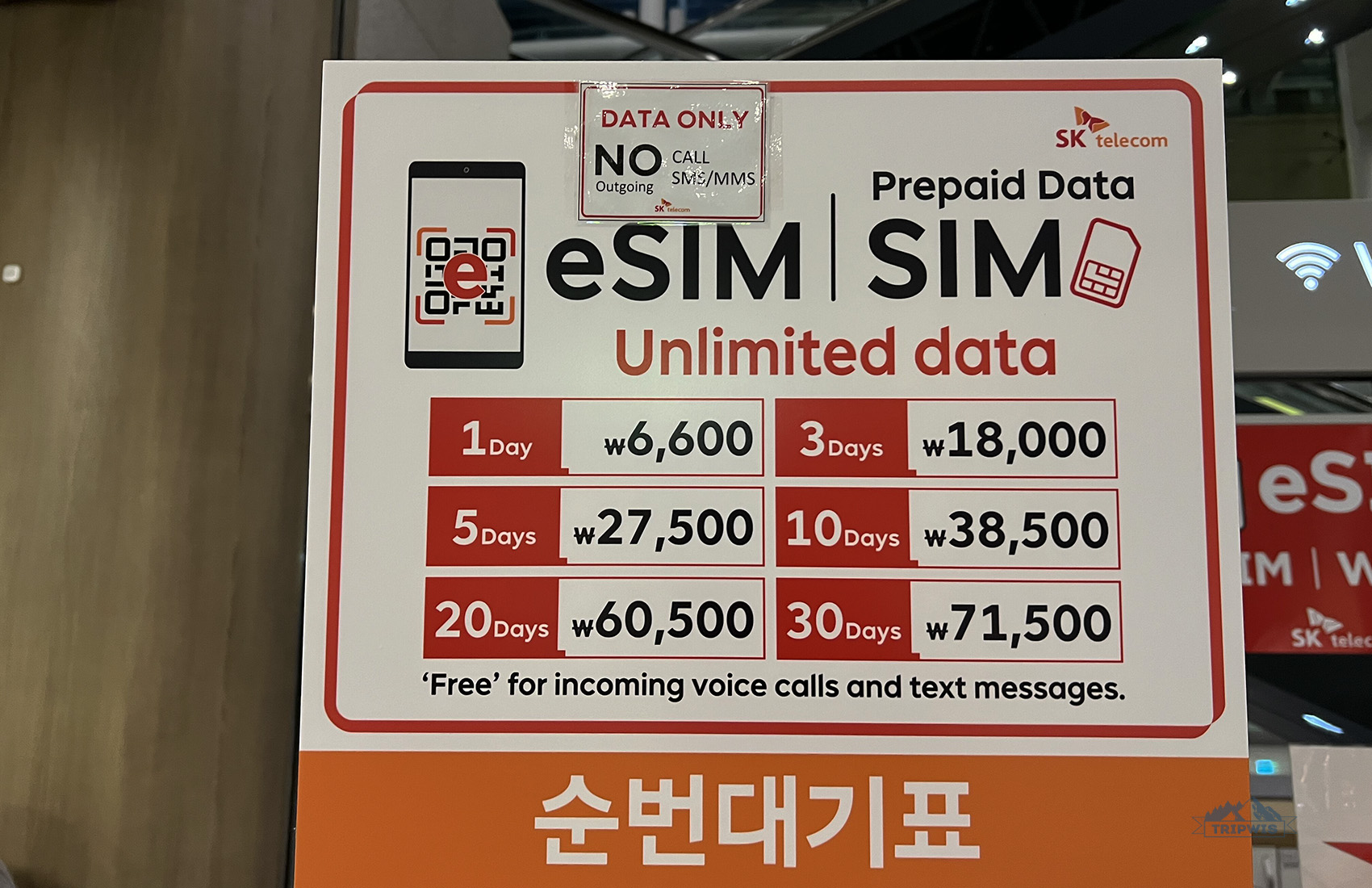
Wi-Fi in Seoul is more than okay, you can ever connect to it on the subway. Mobile internet, however, turned out to be a pain in the butt. In Seoul, mobile internet is quite pricey, and the quality of connection doesn’t match the amount of money you pay for the service.
The best course of action for a tourist traveling to Seoul is to get a prepaid SIM Card. The option isn’t that great, as you get a SIM card for either 1/5/7/15/30 days, without the ability to make calls or send texts. The 7-day package costs around 25,000 krw ($18), which is pretty pricey, but it gets the job done.
- After my trip I got to check what Klook has to offer — and of course I saw this one: An e-SIM with 15gb of data for 15 days for $20.
Keep in mind that purchasing the SIM card in the airport is a rooky mistake, since they are way more expensive there. In the city, you can buy your connection to the online world on every corner. Travel Depot is a very affordable place, also great for exchanging money, if need be!
Where’s the coffee?
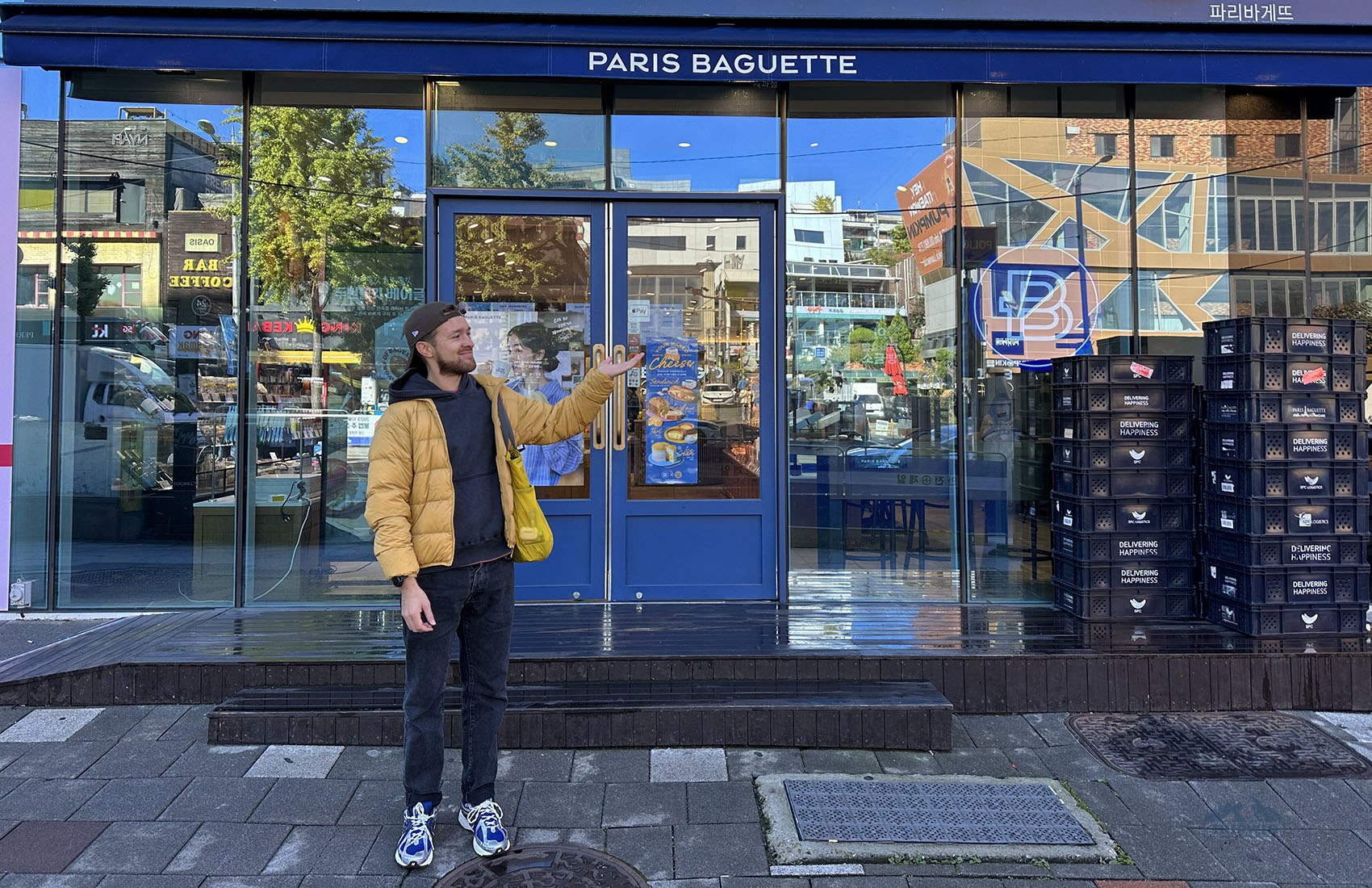
After Australia, we were so used to having to wait in line for coffee as early as 7 a.m… Seoul got our brains doing cartwheels in this regard: Food establishments here have the weirdest open hours! It’s one of the wildest things to know before visiting Seoul we could think of.
- Imagine: You wake up, well-rested, at 9 a.m., and step out to the nearest coffee shop for the mandatory cup of delicious black Jo. Only in Seoul, you might not get the satisfaction of a hot beverage at this time of day.
See for yourself: Seoul bakeries usually start their day at around 10:30 in the morning, while coffeeshops don’t even think about opening earlier than 10-11 a.m. It’s almost like Seoul residents don’t enjoy having breakfast outside of their homes!
What’s more bizarre are the working hours of restaurants serving Korean cuisine: They usually open at around 12 p.m., and then have a break from 3 p.m. to 5 p.m., which, for us, was quite an unpleasant surprise when we finally got to the city center from the airport. Having arrived at 4 p.m., violently hangry, and at the breaking point of murdering someone for a piece of burnt toast, we found out that our options of getting sustenance were close to zero.
It’s funny that being the city with one of the best food cultures, places to visit in Seoul that promise you a respite of a good meal are not really concerned with being open all the time. Kudos to them, for making people conform to their schedule, and not the other way around! That’s one way of doing business, after all.
No joke, cosmetics stores here open earlier than food places! Looking pretty for Koreans is a step above being full, that’s for sure. For that reason, I advise travelers to count on room service and hotel breakfast options to curb their hunger. Early bird gets the worm, or in this case, a Starbucks sandwich, since it’s one of the rare instances of a food joint being open in Seoul at 8 a.m.
Is Seoul English friendly?
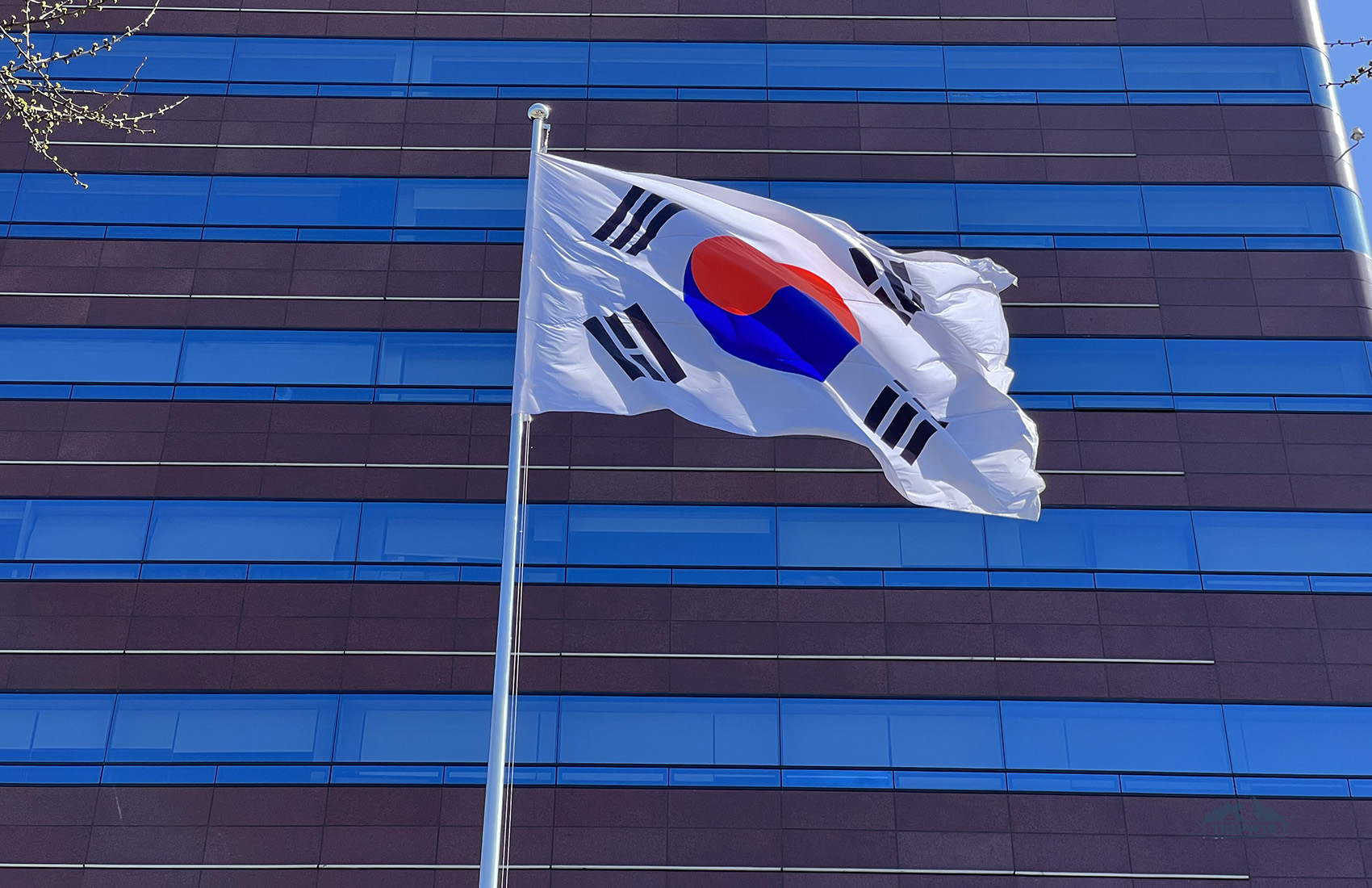
You’ll be surprised to learn that Koreans know very little English. Yes, a hotel employee or a Starbucks barista will understand a few phrases, with the help of gestures, at times. But other than that, don’t try asking a waiter at a restaurant whether or not your order is gluten-free or not, you will not get a coherent answer.
Don’t be too cocky though — while the Koreans you encounter might not speak much English, you, on the other hand, don’t know Korean! You can close up that gap a little by at least learning the Korean alphabet: It’s called Hangul and you can master it in a couple of days (unlike the Chinese alphabet). This tiny effort will enable you to understand simple city signs and menu items. Learn a few phrases while you’re at it, too! Koreans are not French people, you will not get laughed at for trying to speak an unfamiliar language.
Start with these phrases:
- Hello: 안녕하세요 (annyeong haseyo)
- How are you?: 어떻게 지내세요? (eotteoke jinaeseyo?)
- Nice to meet you: 만나서 반갑습니다 (mannaseo bangapseumnida)
That’s a good place to start; so if you love the process, work your way up!
Mapping out your days
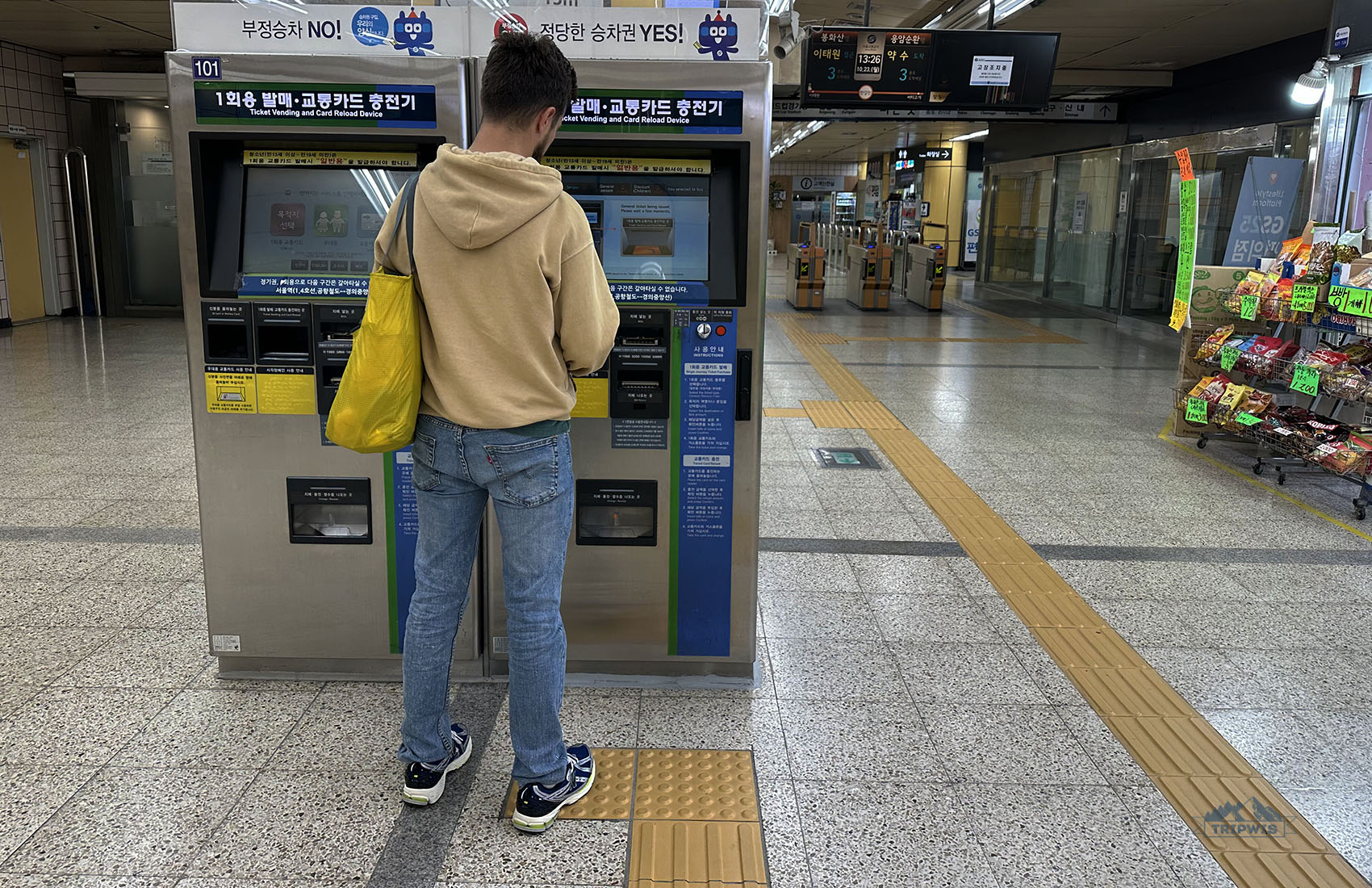
Google maps in South Korea will get you… nowhere. While they may locate the place you’re trying to reach, the way there will be mapped out robotically straightforward, going over buildings, mountains, and other things that are usually non-traversable in an easy, every day manner. And even if you don’t pick the walking route, the public transportation sequence will not be the most optimal one.
I heard that these antics are the direct consequences of South Korea denying to Google data, but the jury’s still out on this one. Plus, it doesn’t matter why Google Maps will show you incorrect working hours of different establishments (that at times are already long gone from the area at the time of your search); it’s way more important to figure out the alternative solutions to this problem.
Thankfully, we’ve got the goods of South Korea (and Seoul in particular) tourist information on navigating the maze that are the city’s streets. I suggest you make use of the following apps’ services:
- Kakao map
- and Navi map
Both applications are in Korean (although you might be able to find the place you’re looking for using the English spelling), and it might take a couple of days to get used to it. Personally, after some time of actively using the apps to map out our itinerary for the day, I became quite fluent in the city’s topography and the way these particular maps do their job.
Cashing it in
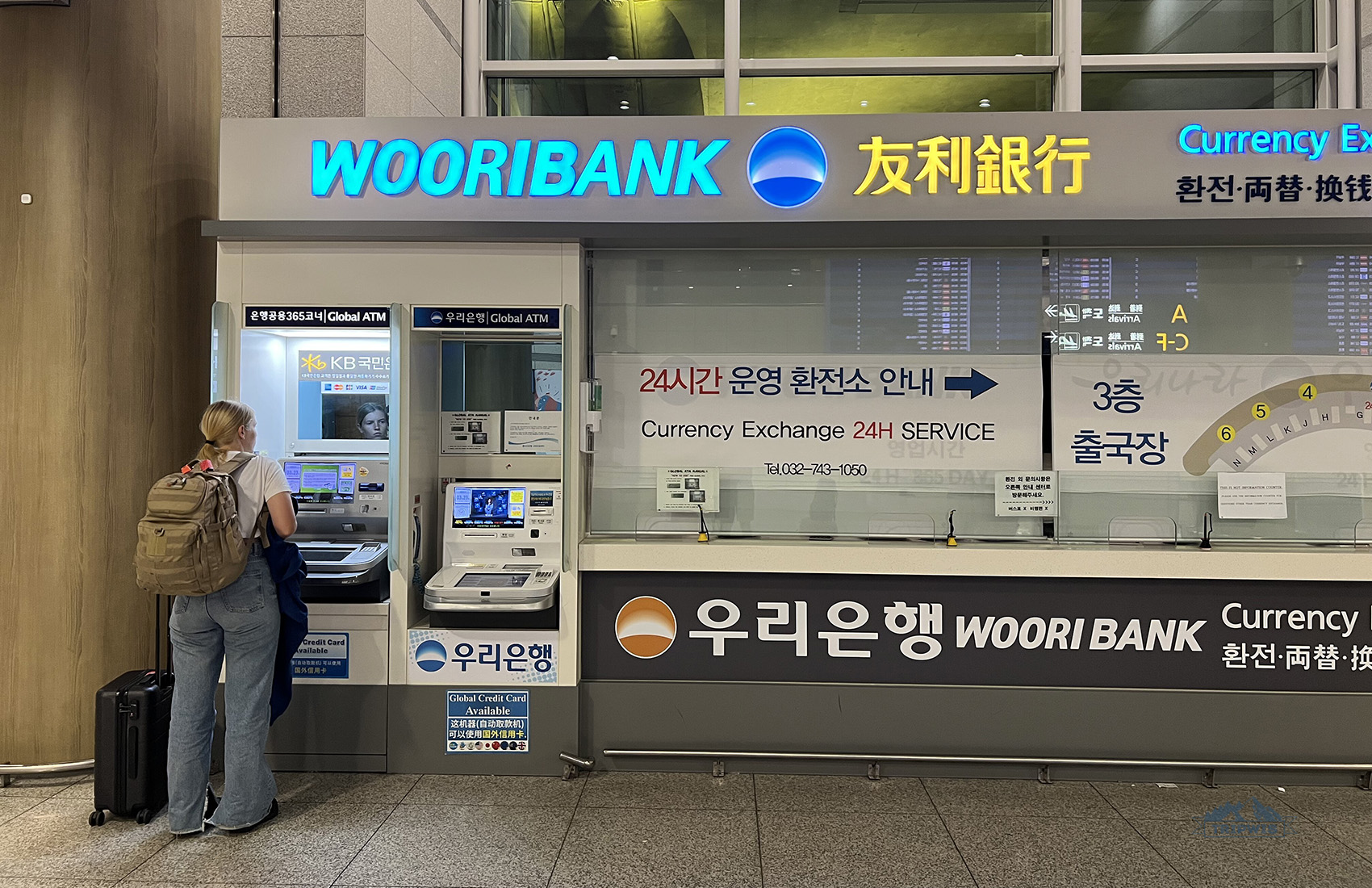
Given the futuristic aura that the city of Seoul exudes from its very core, some of the payment options here are verging on archaic, especially compared to other cities that are going completely cashless by the minute. Cash in South Korea sometimes is the only way to pay for goods and services; plus, Seoul doesn’t support Apple Pay.
I advise you hoard a substantial amount of bills that you might need for some unprecedented emergency (even if this emergence is a shopping spree at Olive Young). You can easily exchange currency at one of the many offices scattered around the city center. Unless you like to be 100% safe in every money transaction you make, then seek the services of the local banks: Personally, we trust Seoul’s KB Bank.
Caffeine meccas of Seoul
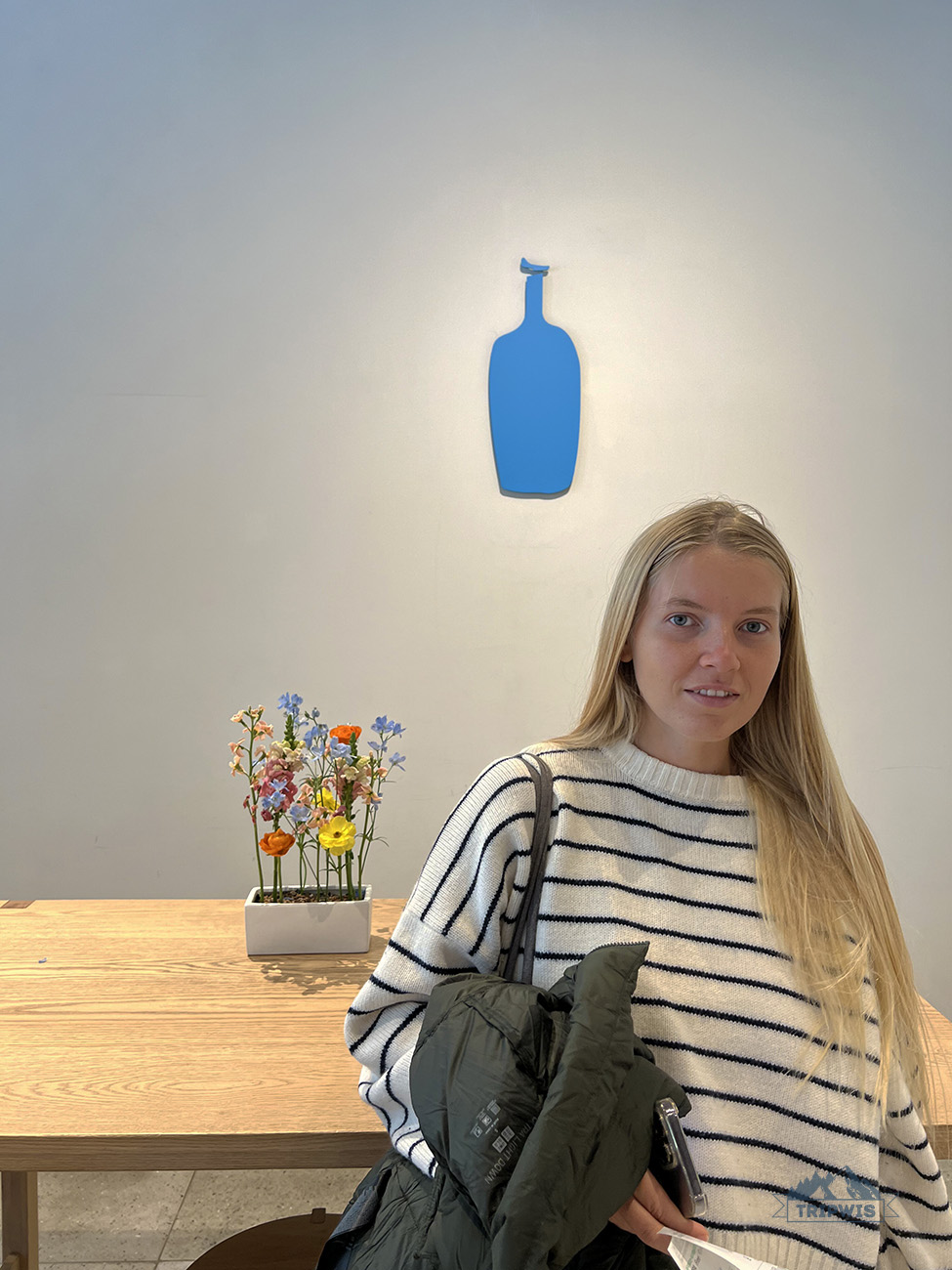 |
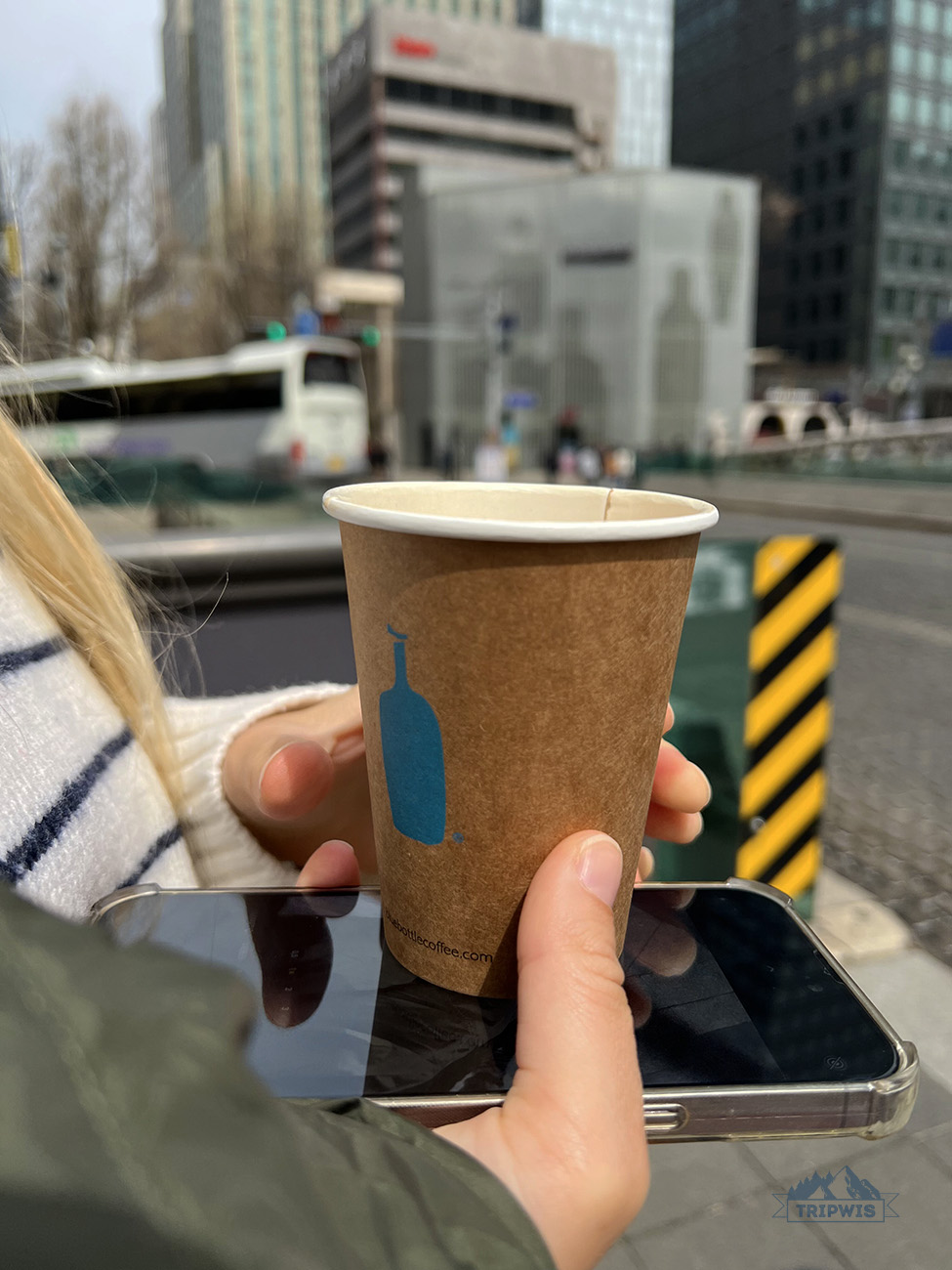 |
While I already mentioned the dilemma of going out for coffee early in the morning in Seoul, the usual answer to the question of what is South Korea known for has always been its plentiful coffee shops and bakeries.
Sometimes having too many choices can freeze your psyche, leaving you unable to commit to just one thing. We’re huge opponents of trying a new place every day, so I’ve created a list of amazing coffeeshops and bakeries of Seoul that are worth a visit. For your convenience, I’ve divided the establishments by districts they’re located in, so you can decide more easily on your food itinerary for the day based on the areas you plan to visit.
So, what are Seoul’s best spots to get your daily coffee and a treat fix?
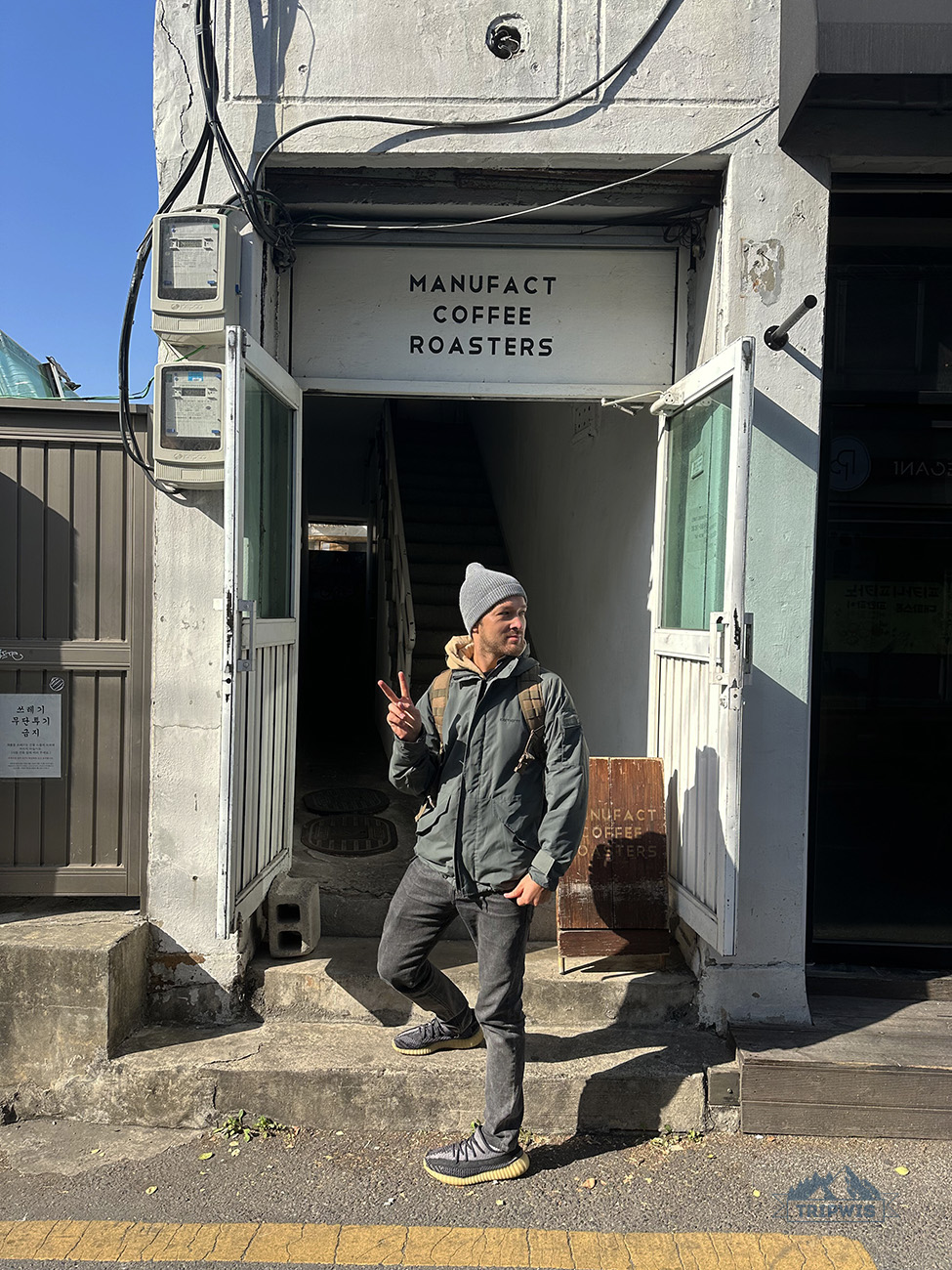 |
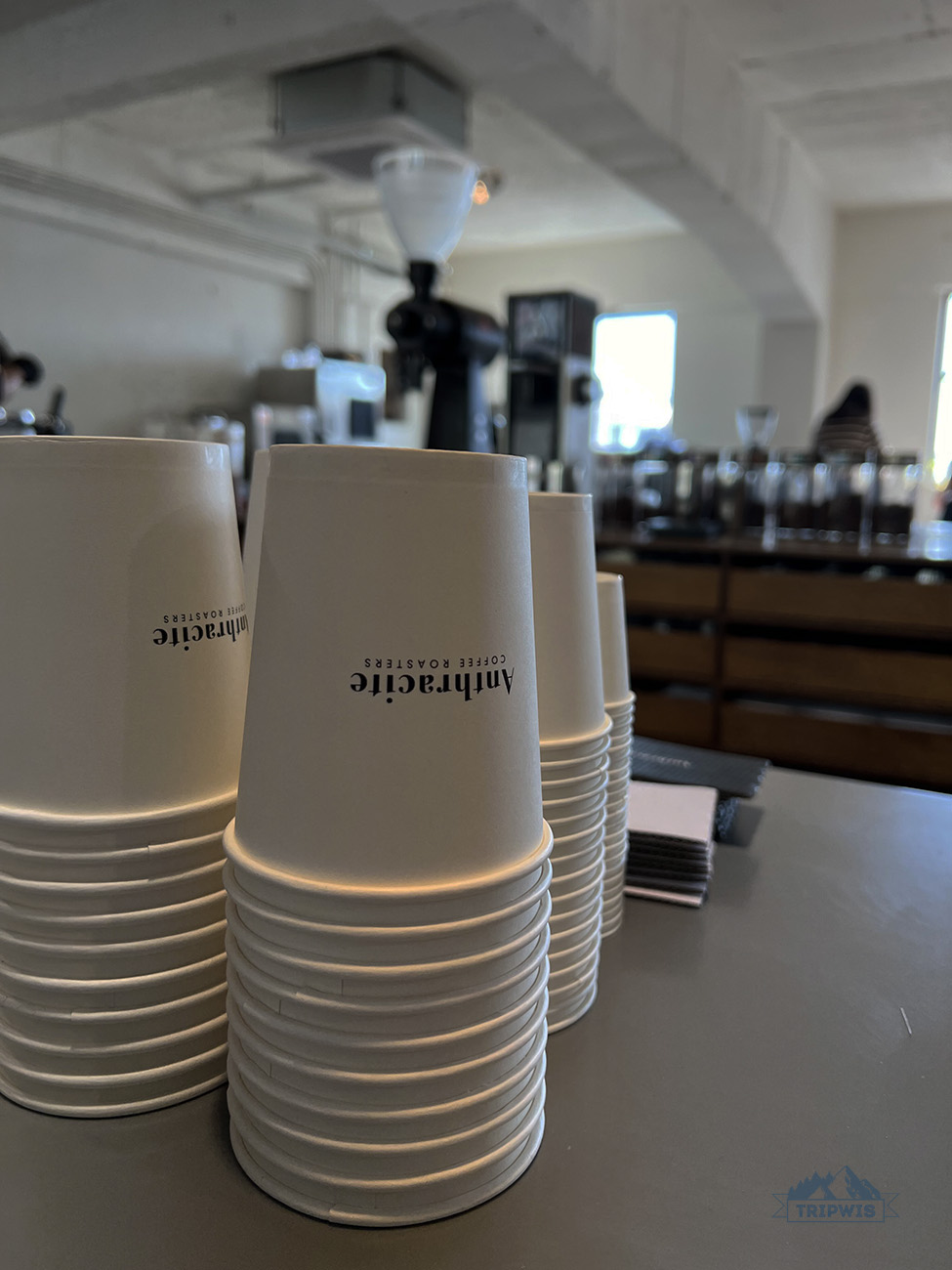 |
- Seodaemun district — Protokoll Roasters, Manufact Coffee Roasters, Coffee Nap Roasters
- Itaewon district — Kenya Kiambu
- The area near Gyeongbokgung Palace — Salt24, Café Onion, Kotton Seoul, Leah
- Seongdong district — Mesh Coffee, Center Coffee Seoul Forest, Low Key, Daelim Changgo, Nudake
- Citywide — Blue Bottle Coffee, Anthracite Coffee
Get caffeinated and continue on with exploring the enchanting city of Seoul!
Is Seoul expensive?
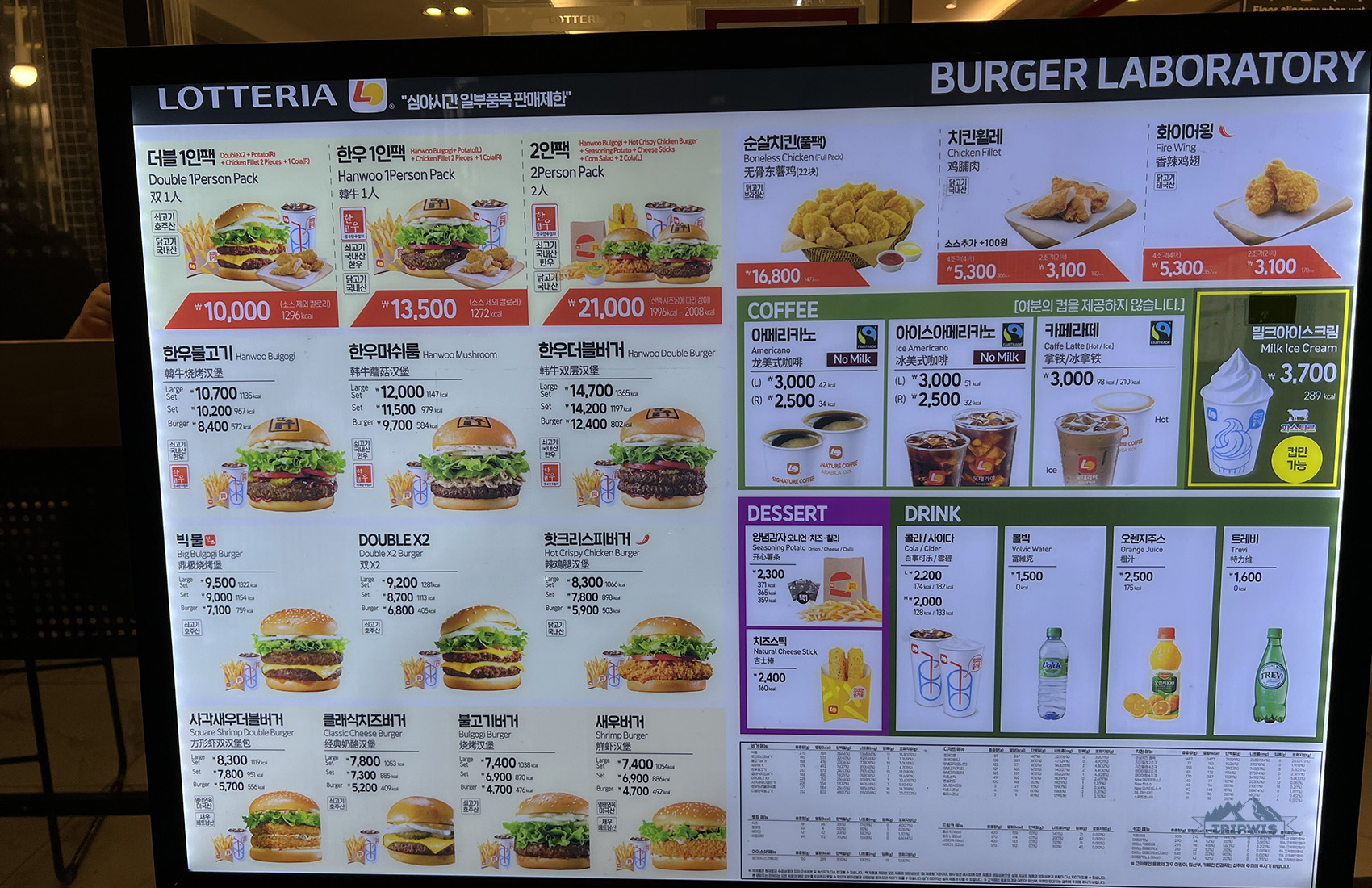
I understand the urge to figure out the budget situation before setting out on a trip to a new country. One of the most telling (and thus, burning) things to know before visiting Seoul is the fact that the city is not terribly expensive.
Feel free to look at my separate post on Seoul travel budget or at these short numbers when deciding how much money to bring with on your vacation:
- Note that the biggest chunk of your spending will be allotted to your lodging situation, as renting a place in Korea is pricey. With that in mind, a tiny apartment far from the city center will cost you around $70–$90 per night
- One menu item at a café — 10,000–15,000 krw ($7–$11)
- One latte/cappuccino — 6,000 krw ($4)
- A sweet treat at a coffee shop — 5,000–7,000 krw ($3,5–$5)
- Single journey bus or subway ticket — from 1,450 krw ($1)
- 20-minute taxi ride — 25,000 krw ($18)
- Street food order at Myeongdong — 2,000–5,000 krw ($1,5–$3,5)
- Prices of Korean beauty products (including the ever-popular Korean face masks) can be found in the previous entries
Our latest trip to Seoul in March of 2025 ended up costing us $1,750 for two for 14 days spent in the city (the sum doesn’t include the money spent on the tickets and renting a place to stay). The bulk of this number was spent on cosmetics and clothing, which some might find excessive spending. But, you know, we figured, when in Rome… When in South Korea, you simply must go on a shopping spree! Plus, the things we bought will last as a really long time.
If you aren’t into frivolous spending (come on, at least buy a pack of face masks), the average day in Seoul will cost you around 80,000–100,000 krw ($57–$72) — that’s without accommodations and flights.
Seoul blossoms
 |
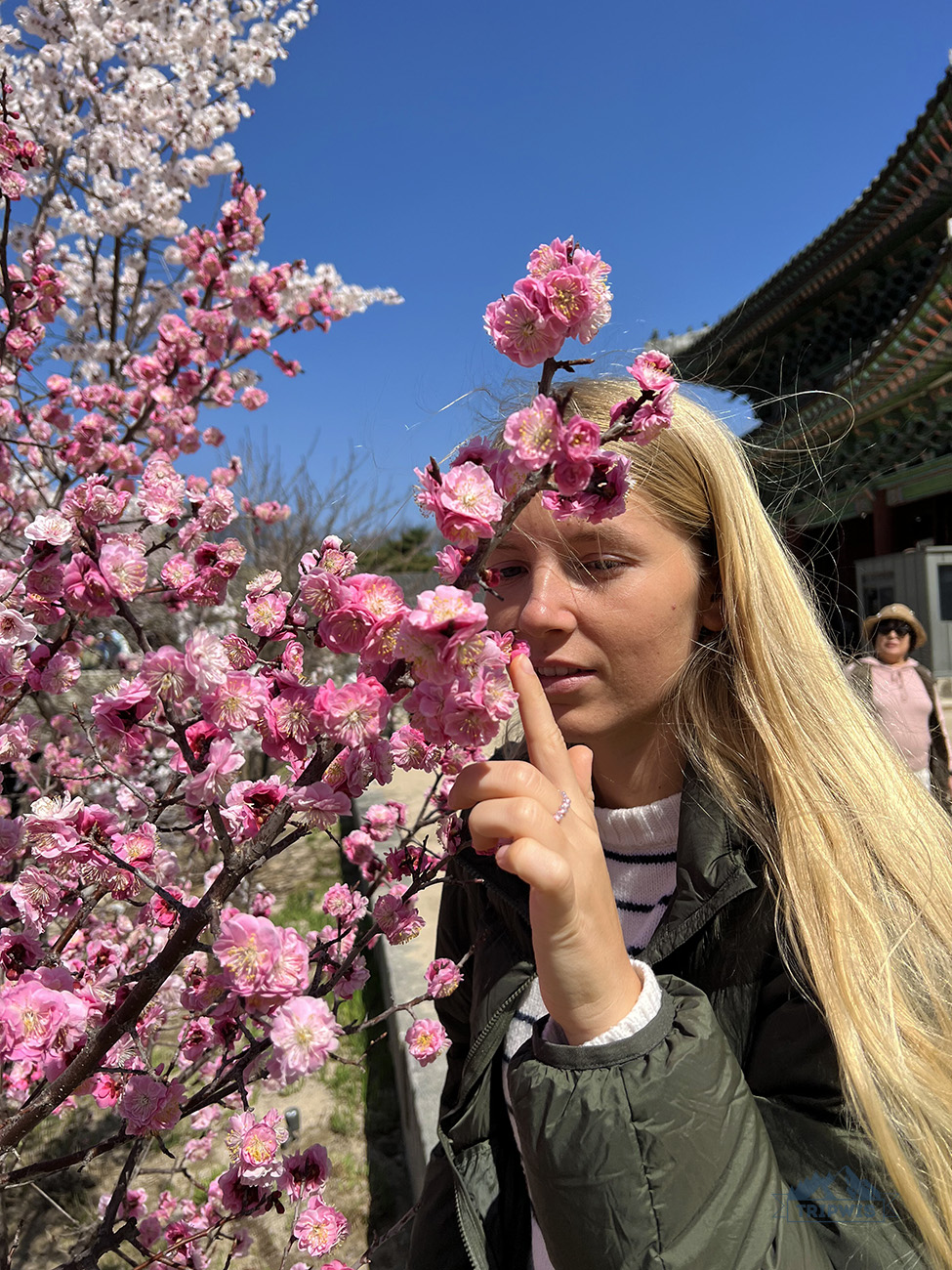 |
What is the best month to visit Seoul if you want to take the iconic pictures of being surrounded by soft cherry blossom petals? The period from late March to early April is one of the best times to come to the city in search of trees in full bloom. Magnolia trees, cherry trees, and all the different flower types you could ever think of come alive in the streets of Seoul, creating pedestrian traffic jams of eager onlookers elbowing each other to get the best shot.
It’s interesting to know that what the rest of the world accepted as sakura blossoms, as the Japanese love for their flowering trees is so prevalent in the modern culture, here, in Seoul, it’s known as beotkkot, or simple pink cherry blossoms. So, make an effort to change the way you think about this spectacular phenomenon, since little people will understand what you’re trying to find when you’re asking where it’s best to see sakura in Seoul.
Okay, enough beating around the bush (no pun intended); what are the best places to see cherry blossoms in Seoul?
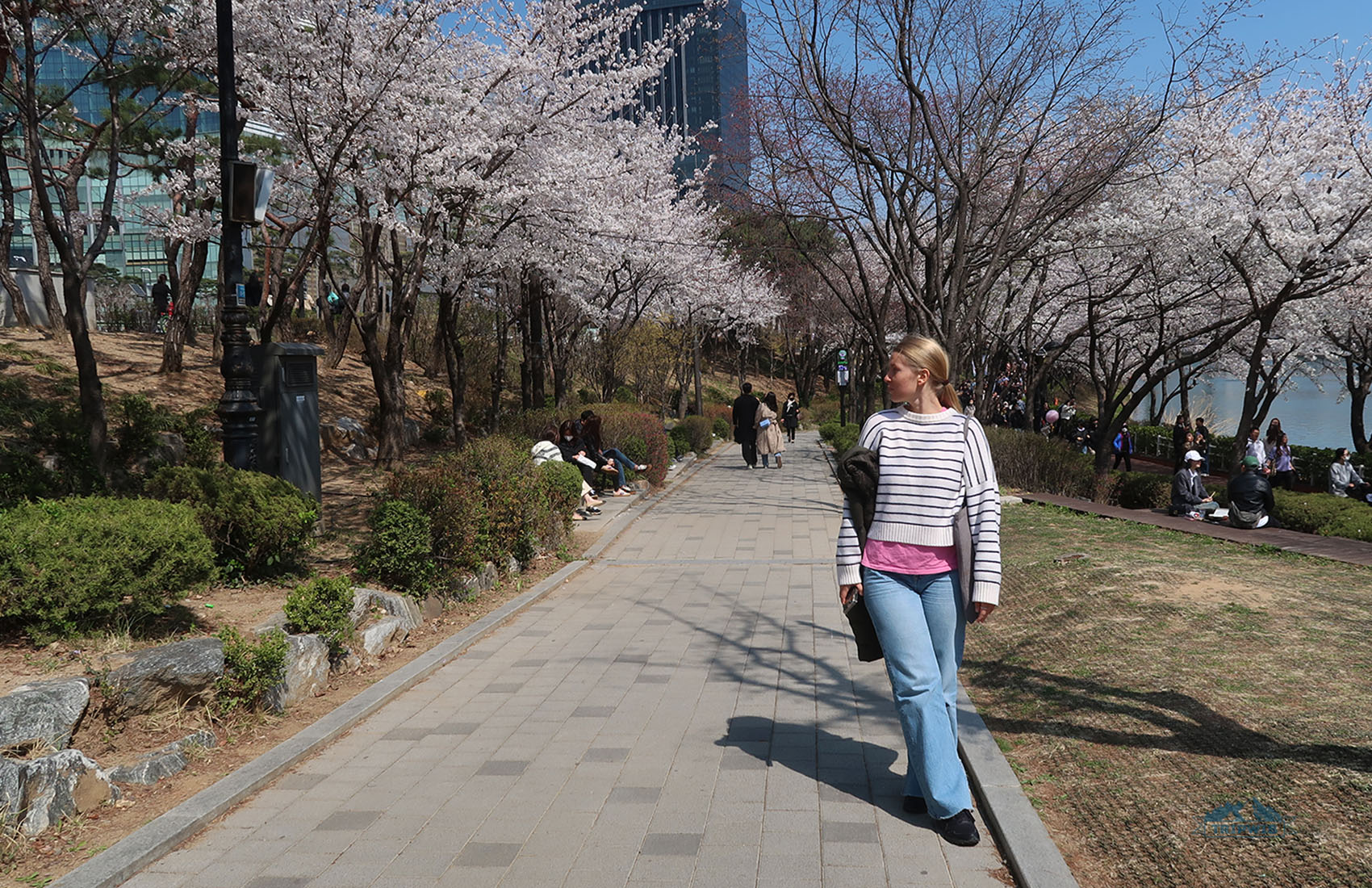
- Seokchon Lake Park — located next to the Lotte Mall, the place can get quite crowded, and for good reason: Full fluffy pink trees surrounding the lake, with their flowers mirrored in the water, doubling the experience, is the postcard-worthy sight to witness.
- Namsan Park — due to elevation, the area welcomes the full bloom later than the rest of the city. So, if you’re afraid you’ve missed your chance, don’t get discouraged too soon: Embarking on a walk to Seoul Tower might surprise you with pink trees lining the path up. The hike to Namsan Tower has proved to be quite a spectacular attraction, so if you want to learn more about this particular activity, check out my detailed guide to doing the walk.
- Seoul streets — that’s right, during peak blooming season, you don’t actually need to go out of your way in search of the cherry trees. In Seoul, this sight is as common as Starbucks is in NYC, so keep your camera ready at all times while walking around downtown.
One of the other times you should not miss in Seoul is its other “blooming” season, which comes in October. The trees turn all the different shades of red, yellow, and orange; making the streets the perfect backdrop for a fall-inspired photoshoot.
Get your palate ready
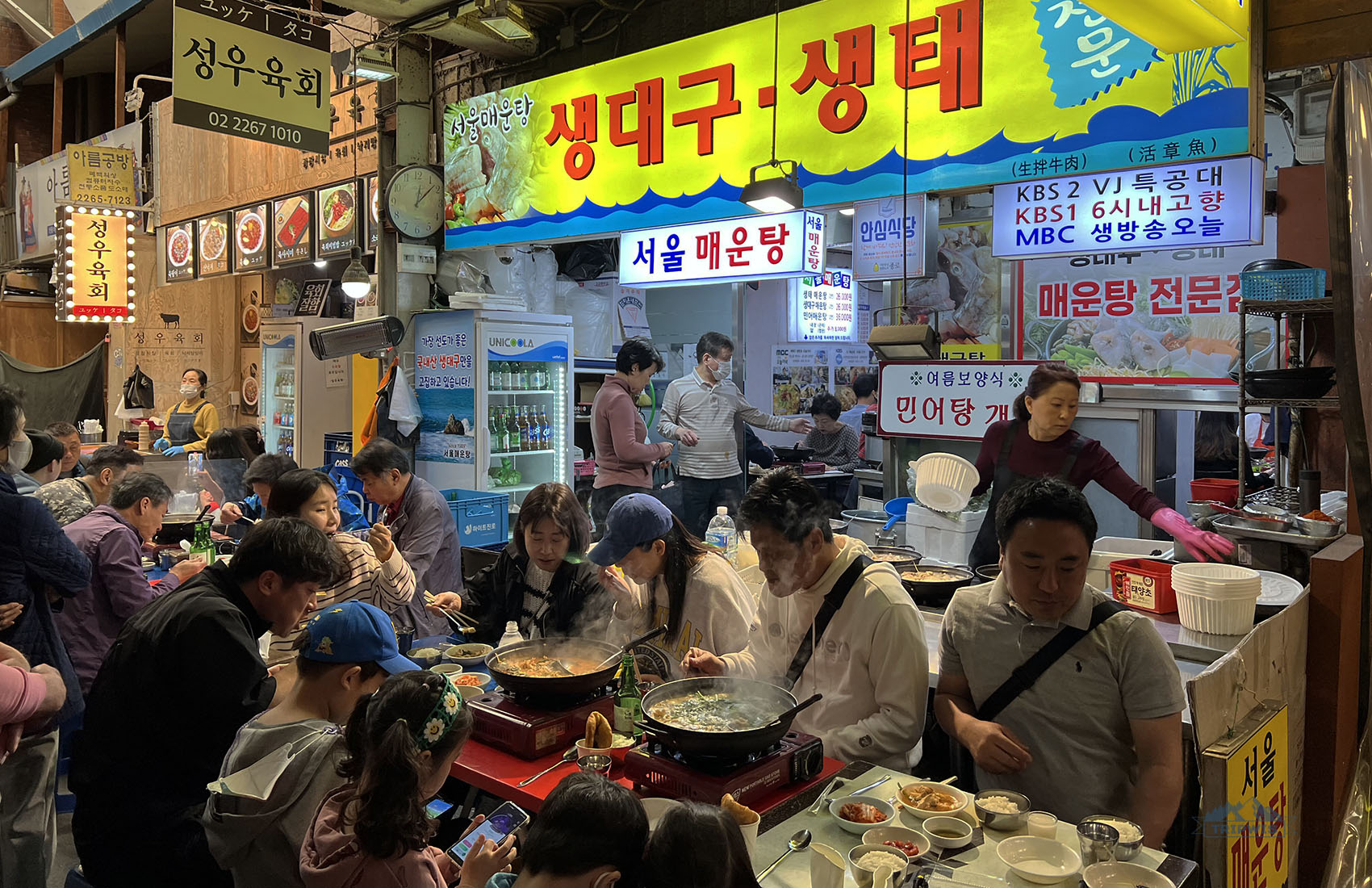
Seoul is picky eater’s worst nightmare. Let us backtrack a little: If you’re not feeling adventurous when it comes to your food choices (in other words, if an avocado toast is all you could possibly want to eat for breakfast, lunch, and dinner), Seoul’s delicacies might not be your cup of tea.
I’ve found the perfect solution to maintaining great sustenance levels while traveling around South Korea, while totally avoiding spice and unusual ingredients:
- Any Korean supermarket (and even their alternatives to 7/11) always has fresh rolls for 4,000 krw / $3 and onigiri for 1,500 krw / $1. Perfect food for a hungry tourist on-the-go!
As for the café recommendations that serve food palatable to travelers not yet ready to dive into the wonderful world of authentic Korean cuisine, I’ve come up with a few:
- Slow, Cali (Mapogu, Seochogu) — best place in the city for salad bowls
- Root Everyday (Itaewon) — brunches and bowls galore; a worthy stop in the line-up of other deliciously enchanting food spots in the international district
- Café 413 Project (Gangnam) — all-day brunch café where we savored the best shakshuka of our lives
- Grain (Seodaemun) — the ultimate breakfast destination, where you’re guaranteed to order seconds of their mouth-watering pancakes, sandwiches, and pastries!
Now you see me, now you don’t
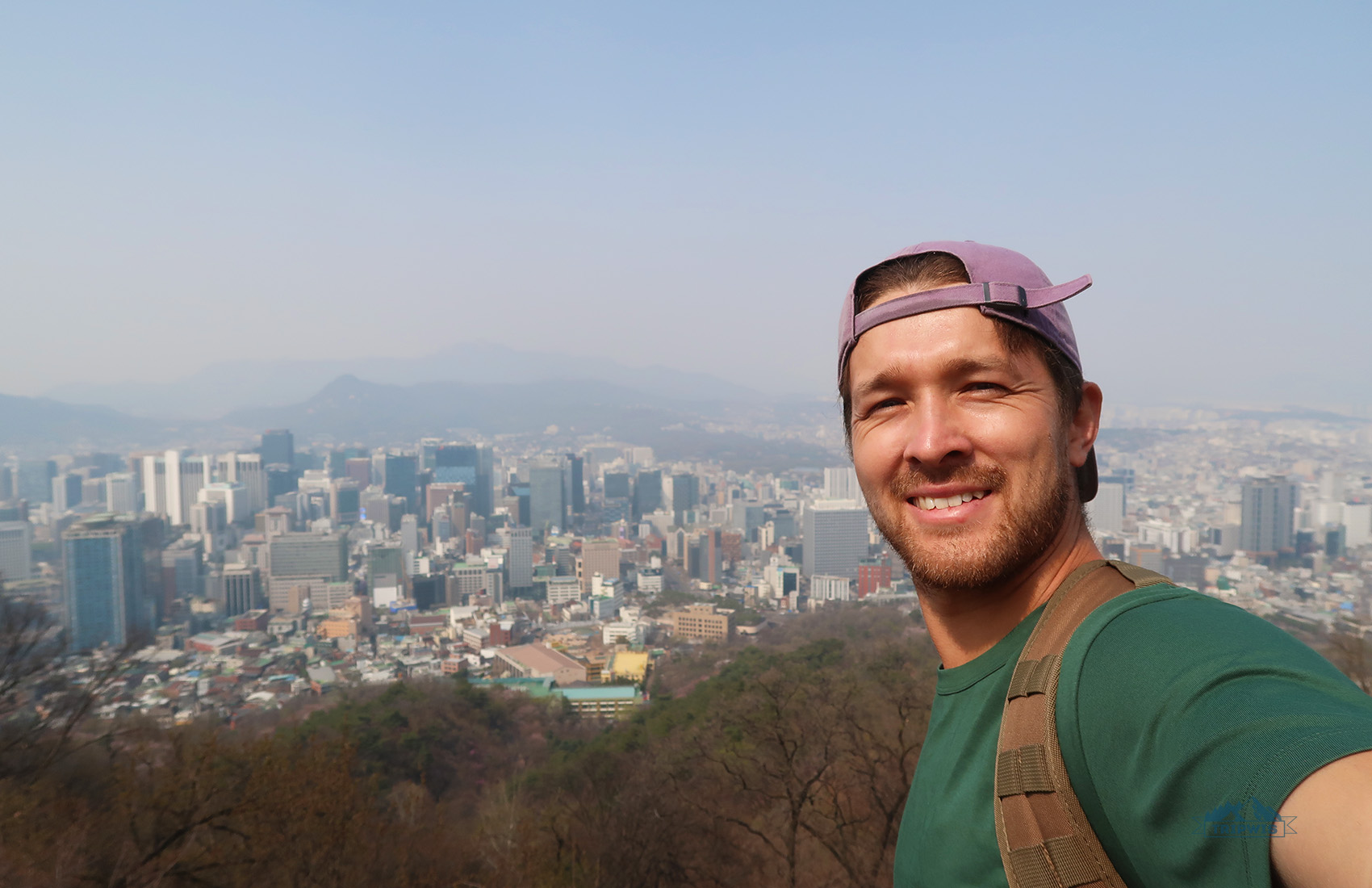
South Korea is famous for its poor air quality, that’s just the fact. Whether it’s the rapid industrialization of the country itself, or the neighboring China’s factories blowing their smoke over Seoul’s territory (the rumor I’ve heard a lot over the duration of our trip), but it doesn’t change the reality of the matter.
Even though I always knew about the bad air quality in Seoul, I still was flabbergasted over the bright red warning notification on the weather app. Seoul residents usually monitor the air situation by using the Iqair app. You can follow suit and determine whether your day will be spent shopping or hiking, depending on the quality of the air.
If you don’t believe that the situation can get so dire, try looking at the city from above. Viewpoints in Seoul aren’t a popular tourist activity in winter and spring months, and I can attest to this fact. Of course, there still can be days that are clear and bright, but they’re rare, giving in to hazy periods when smog covers everything below in a thick blanket. Because of this, I came to the conclusion that the best time to visit Seoul is in summer and fall months.
Exciting world of Korean food
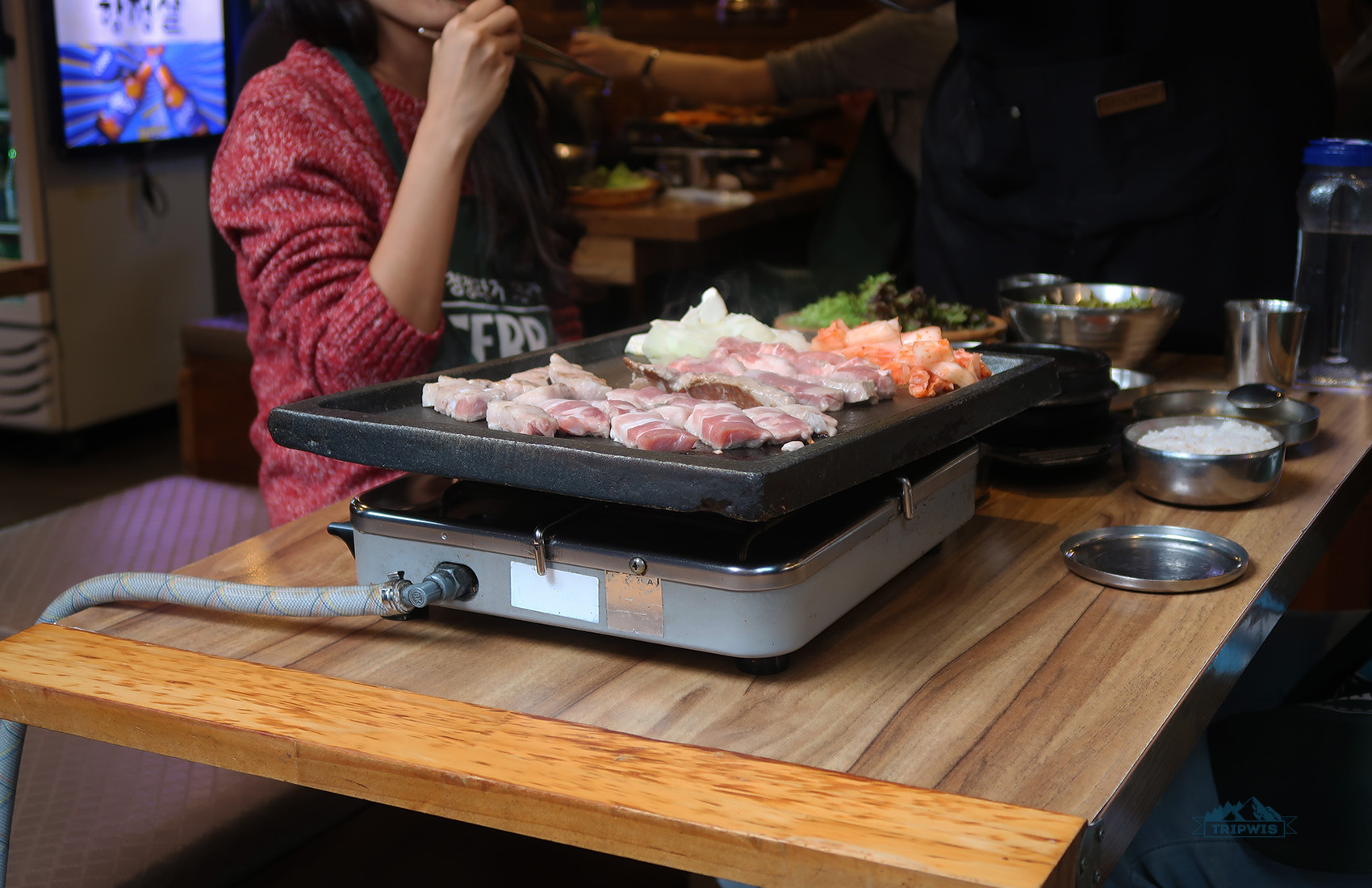
While I’ve mentioned before that Korean delicacies are not for the faint-hearted, there are still a few dishes that you absolutely must try. I’m talking all things noodles and dumplings, so don’t get too scared about having to eat some unintelligible concoctions that are hard to even describe.
So, are you ready to explore the fascinating world of Korean cuisine? I found a few places that are up to the task:
- Hwangsaengga Kalguksu — you might wonder why this simple-looking restaurant continuously gets the astronomically long lines that it does, and the answer is simple: This place has been on the Michelin guide since 2017, which is not a spot they give out frivolously. The menu consists of only nine items, which I found very endearing: We’re all for quality over quantity. I recommend you start with noodles soup and mandu (dumplings) — 11,000 krw ($8) for such a highly regarded place is a steal! Plus, you get unlimited amount of kimchi for free, and how can you pass up on this offer?
- Oreno Ramen Insa — this place mastered the equation of four kinds of ramen for 11,000 krw ($8) each plus the primed spot on the Michelin guide, which, as expected, equates to super long lines to get into the establishment. I’d heard that the place was all the rage, but opted out of spending what seemed like hours queuing up to enter in favor of going to another well-reviewed, albeit less popular, place — Hana Ramen. It did not disappoint!
- Osegye Hyang — Korean cuisine for vegan travelers, which can also be enjoyed by meat-eaters that are too scared of spice in local “carnivore-only” dishes.
Mountains of hikes
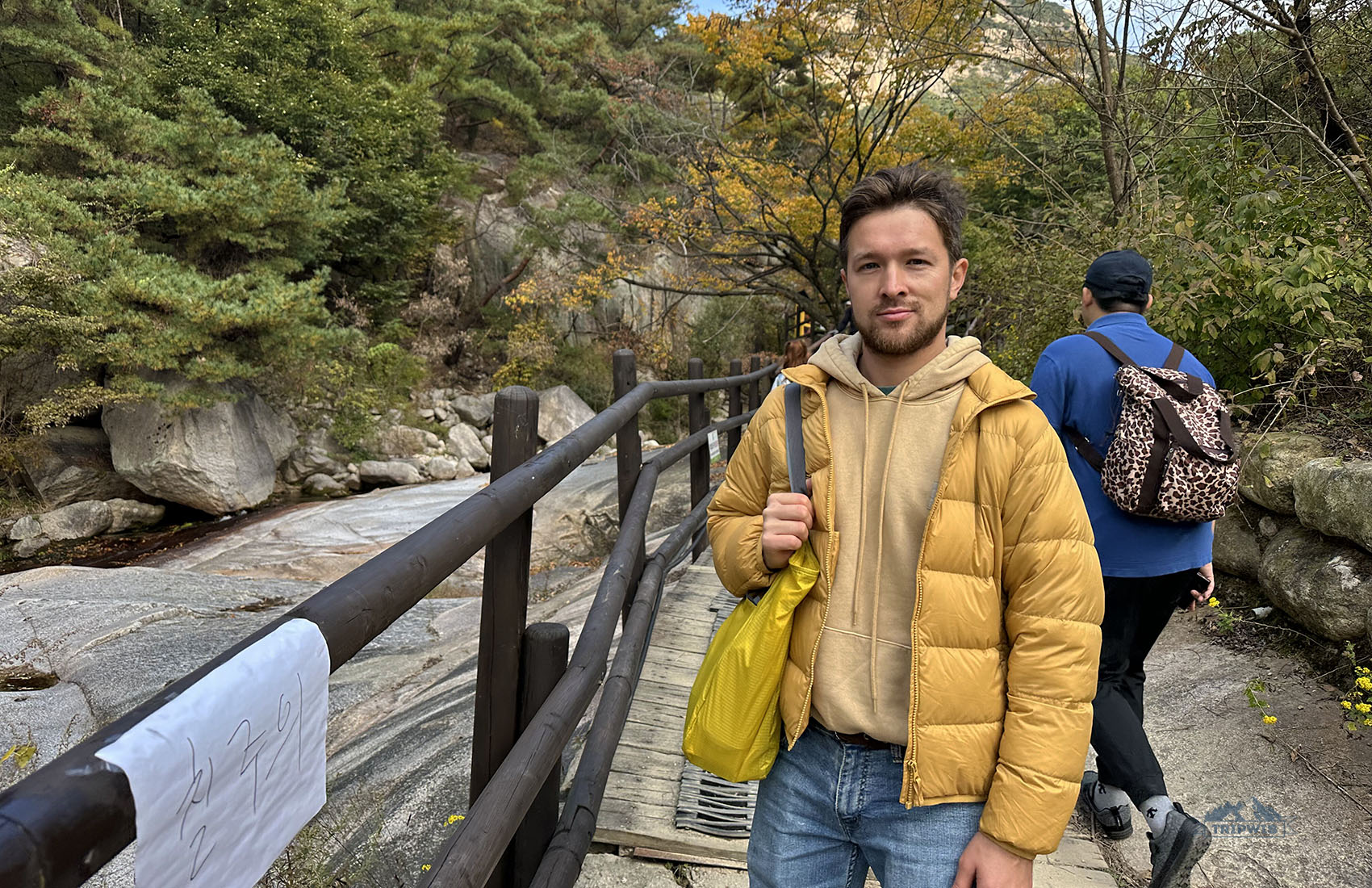
When it comes to interesting things about Seoul and its residents that I’ve noticed over the course of our trip here is that Koreans, surprisingly, love to hike! I also had no idea that Seoul was surrounded by mountains, which the aforementioned outdoorsy residents hike over with keen regularity.
If you want to get your blood flowing with aerobic exercise yourself, without exerting too much of the finite amount of travel energy, there are a few hikes that can be done inside city limits. The most obvious one is the walk we’ve mentioned before — the hike to Namsan Tower.
City views don’t cut it for you? Then take the bus to the start of Bukhansan National Park walk, where mountain panoramas will guide your way forward. It’s one of the most popular hikes in Seoul’s vicinity, so get ready to meet lots of equally-minded outdoor enthusiasts like yourself.
Bird’s-eye Seoul

Visiting the highest viewpoint in the new city has become our newfound tradition in the last years of our travels. Seoul’s lookout points, however, proved to be fruitless in views and not really worth the money or the trouble. Why?
- Well, the first reason being the fact that you can get enough city views on the free walk up to Namsan Tower, so spending the additional sum on coming up higher seems like a poor financial decision.
- Secondly, with the poor air quality of the city, the higher you go — the less you see. Unless, of course your idea of things to see in Seoul is the thick layer of fog and haze. Otherwise, I’d advise you pass up on the activity altogether.
Personally, we decided to roll the dice on city views and visited the magnificent Lotte World Tower. Truth be told, I didn’t find the panoramas worthy of time and money. Even if you luck out and visit the viewpoints on a clear sunny day, Seoul’s just not that pretty to look at from above. Bird’s-eye view of the city mainly consists of huge clusters of grey-colored residential buildings. You can’t make out beautiful palaces and lush parks from this far up, and the downtown area is sparse with skyscrapers. The only things that are exciting to look at are the mountains that surround the city — truly postcard-worthy views, if you’re lucky enough to see them.
Consider my advice on not spending your time going high up for the city views one of the most practical tips for visiting Seoul. Other suggestions can be taken with a grain of salt, also called “personal preference”.
Getting close to the North
Korean Demilitarized Zone, also known as DMZ, is a popular tour destination amongst Seoul visitors. What is it, exactly? It’s technically a border that runs across the Korean peninsula, dividing the South from the North. Essentially a buffer zone, it’s one of the many places worth visiting to learn the rich history of the everlasting conflict between the two countries.
The many tours include lots of unique tourist attractions, from the famous caves that were secretly dug by North Korea to the Bridge of Freedom and the Dora Observatory, where you can see part of North Korea closest to the border on a clear day. Learning about the incidents that happened over the course of DMZ’s existence is quite heavy, but history is not supposed to always be cheerful and exciting.
If you want to explore the bordering area up close and personal with a knowledgeable guide, I recommend the following tours:
What are the do’s and don’ts in Seoul (South Korea)?
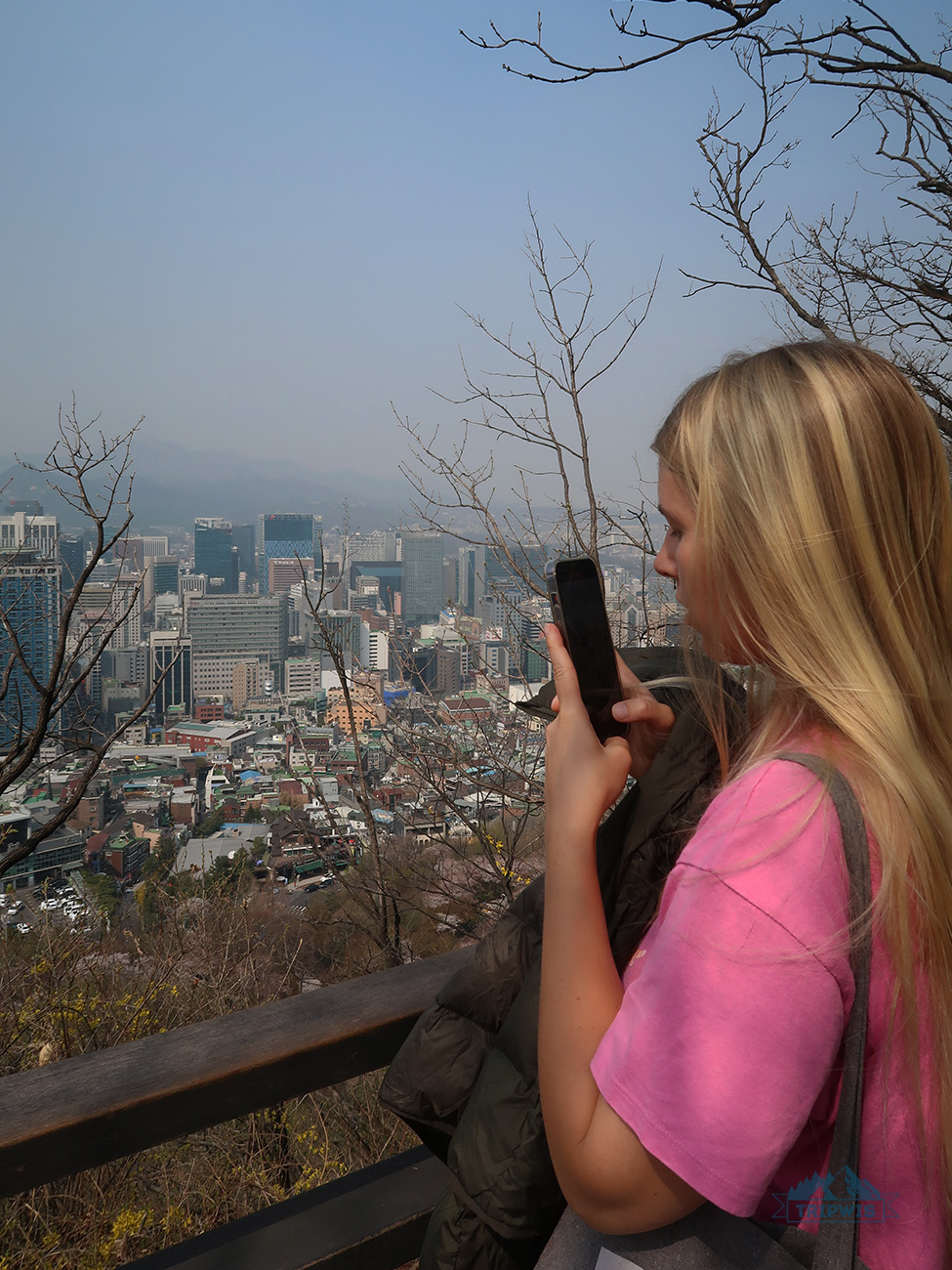 |
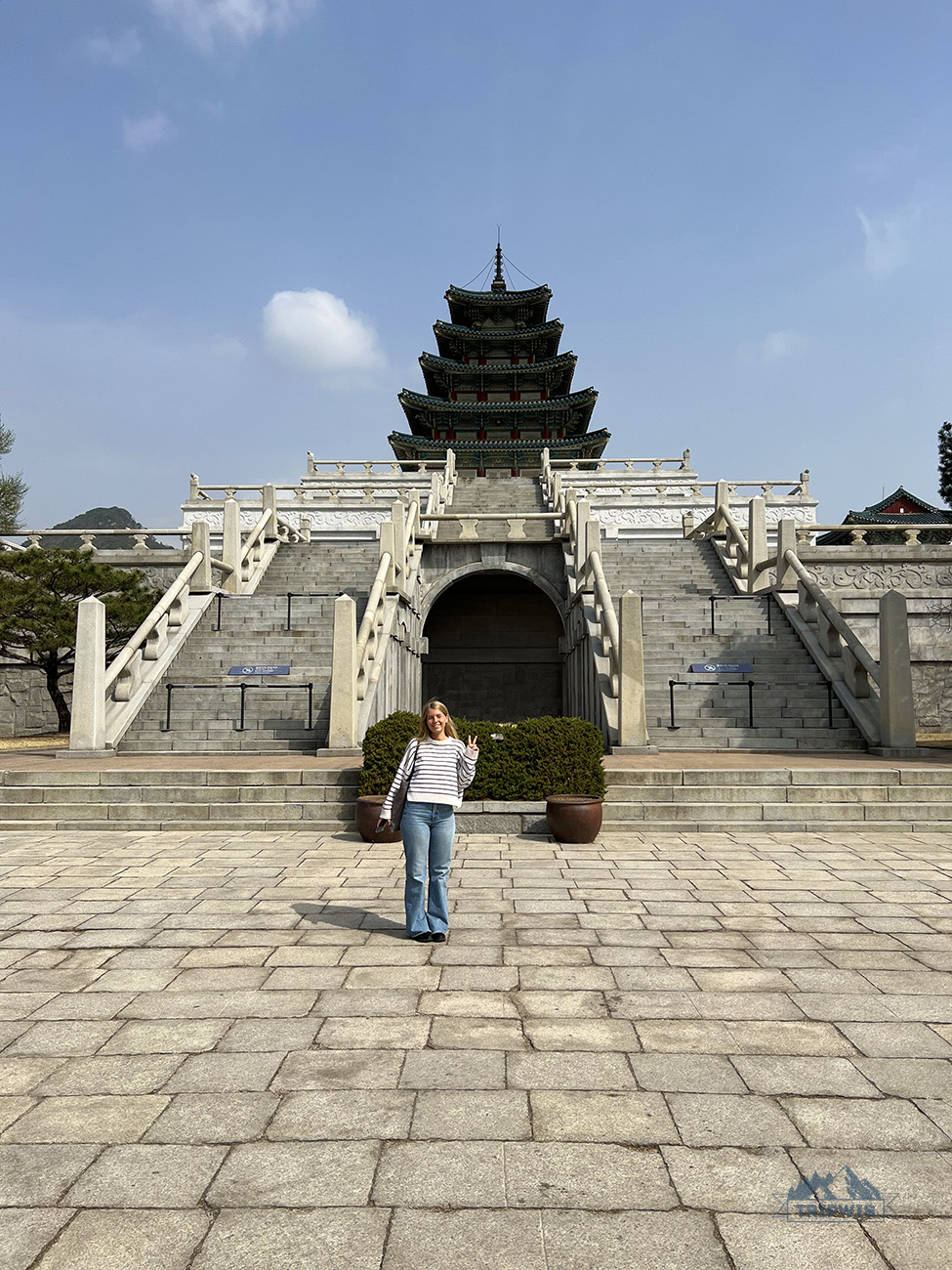 |
It’s so easy to break some cultural unspoken rule when traveling to a new foreign country, especially if it is so different from the rest of the world. So, what to know before going to Seoul in terms of the national M.O. of its residents?
When you are planning your trip to South Korea (Seoul), DO:
- Know the requirements for going to South Korea in 2025. I usually stay up-to-date with this ever-changing information by checking the official Korean Embassy’s website.
- Learn the local brands worthy of your attention beforehand, as you will get too overwhelmed by choice upon entering any Korean store. I know that my head was spinning from the huge assortment of cosmetics in Olive Young store, kind of making me wish I’d researched the topic before coming there.
- Remember that you actually can drink tap water in Seoul, even though some residents still stick to bottled water. Their concerns are valid, since not so long ago tap water in Korea was completely undrinkable due to old piping contaminating the stream. The new pipes made the water safe to ingest, but a force of habit is hard to break.
- Accept an alcoholic drink with two hands. And in general, if you’re offering something to someone in South Korea, use both hands for the gesture, as it shows respect.
- Keep the streets clean: Seoul is super neat, which was a weird observation we’ve had, since we couldn’t see a single trashcan anywhere out in the open.
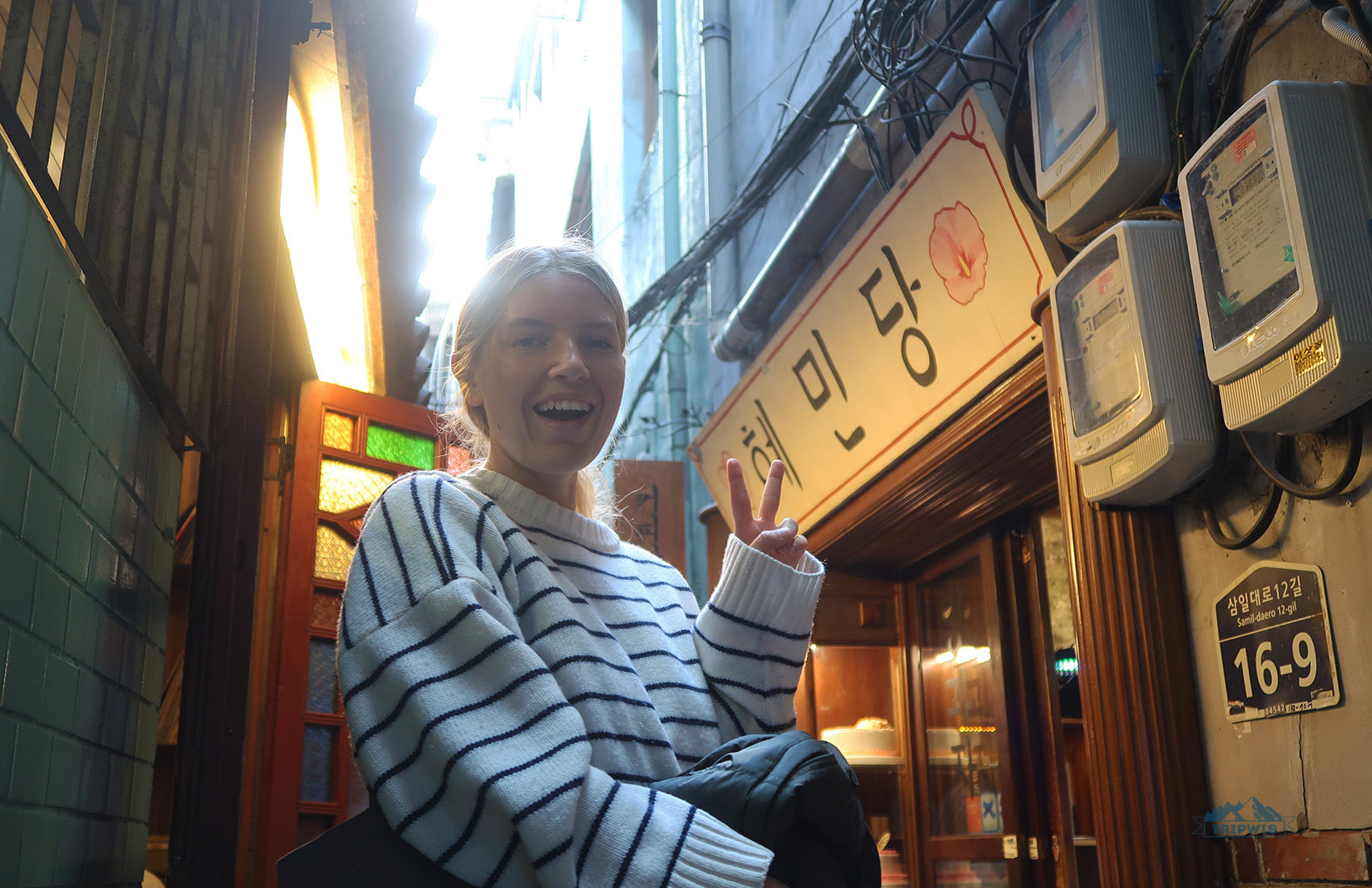
To make sure your trip to Seoul is safe and sound, DON’T:
- Break common rules of behavior. For example, if the seat on the public transport is allotted to pregnant women, nobody but said pregnant women are allowed to sit in it. Even if you’re a woman, you will be asked to vacate the seat. The seat will stay empty even if there’s no pregnant women in sight!
- Forget to tap your T-money card upon getting off the bus, it’s super important!
- Cross the street without looking both ways. Pedestrians here aren’t kings of the roads, so a moving car won’t stop to let you cross. Better to be safe than sorry!
- Smoke anywhere but the special smoking areas, this rule is strictly enforced across all of South Korea.
- Wonder why there’s no number four seemingly anywhere in South Korea. The topic is tricky and is rooted in fear of the way the number sounds: The association with death is prominent and is considered a sign of bad luck.
Remember these general guidelines when out and about in the streets of Seoul, and you’ll have the adventure of the lifetime without unnecessary stress of doing or saying the wrong thing.
How many days are enough for Seoul? Our travel itinerary
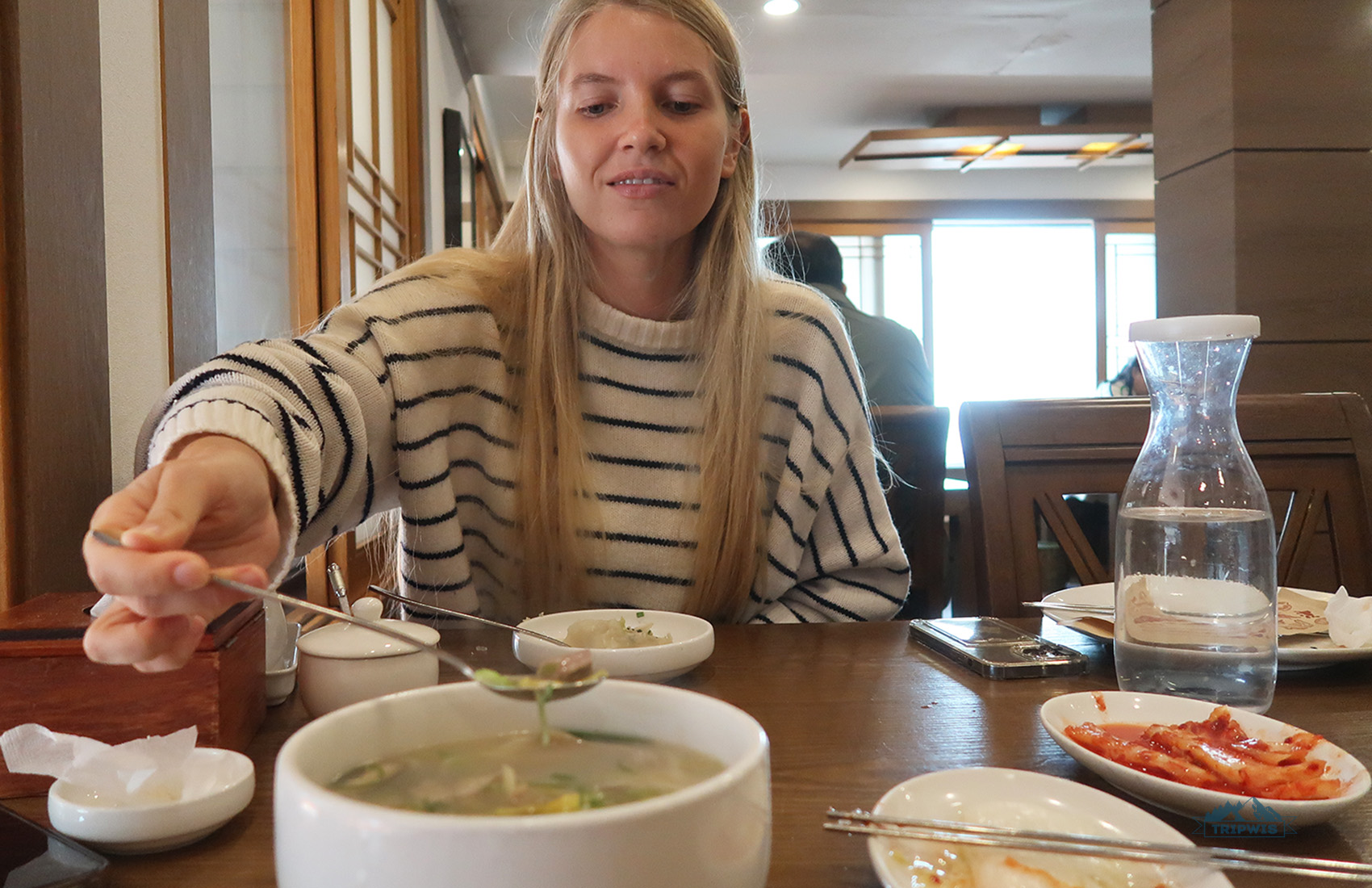
Although you could potentially spend weeks getting to know all the nooks and crannies of the city, all the constant hustle and bustle might get too much after the first week or so, in our opinion.
With that in mind, how many days is enough to visit Seoul? Personally, I believe that the optimal amount of time needed for the first-time visit is 4–5 days. That’s for city-limits exploration only!
If you plan on venturing outside Seoul during your trip, whether on a hike or on a tour to DMZ, then consider allotting at least two weeks to get the best possible experience out of your South Korean vacation.
I hope that my list of useful tips and activities you should know about before traveling to Seoul will be your trusted guide when planning your own adventure in the country. If you have any further questions on the topic, shoot them in the comments below!
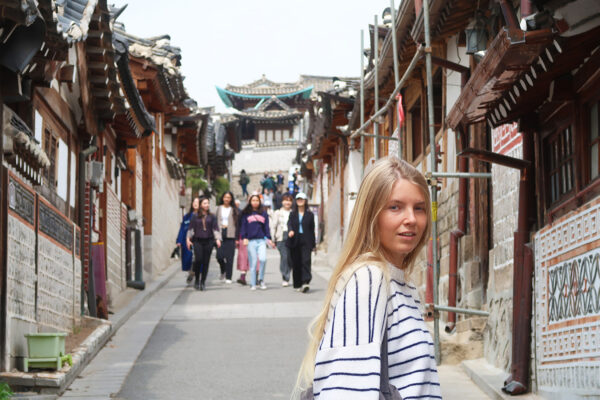


Wonderful! Read partially! I’ll will read it with attention!
Thank you